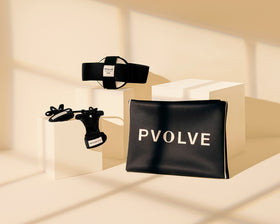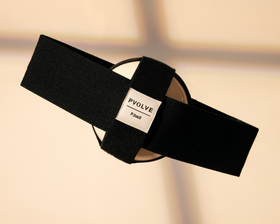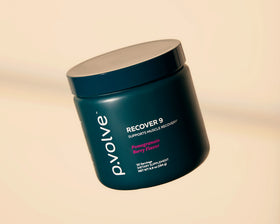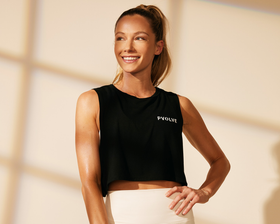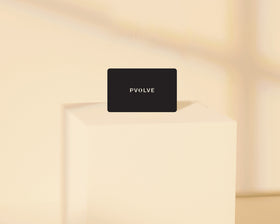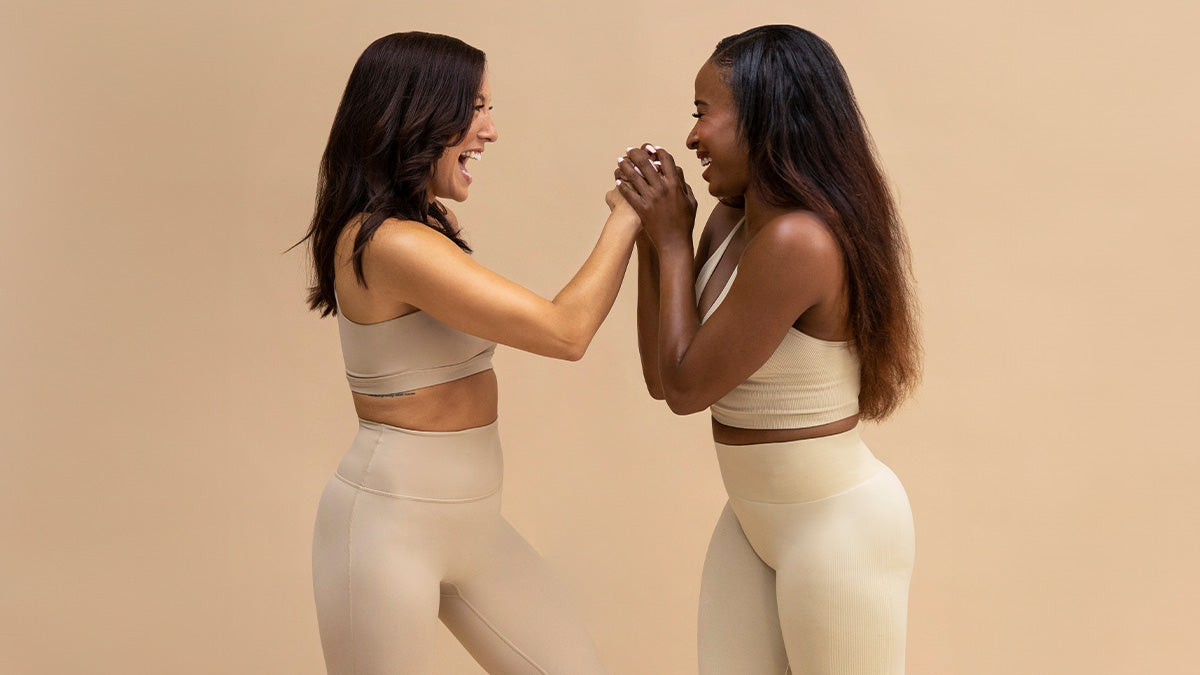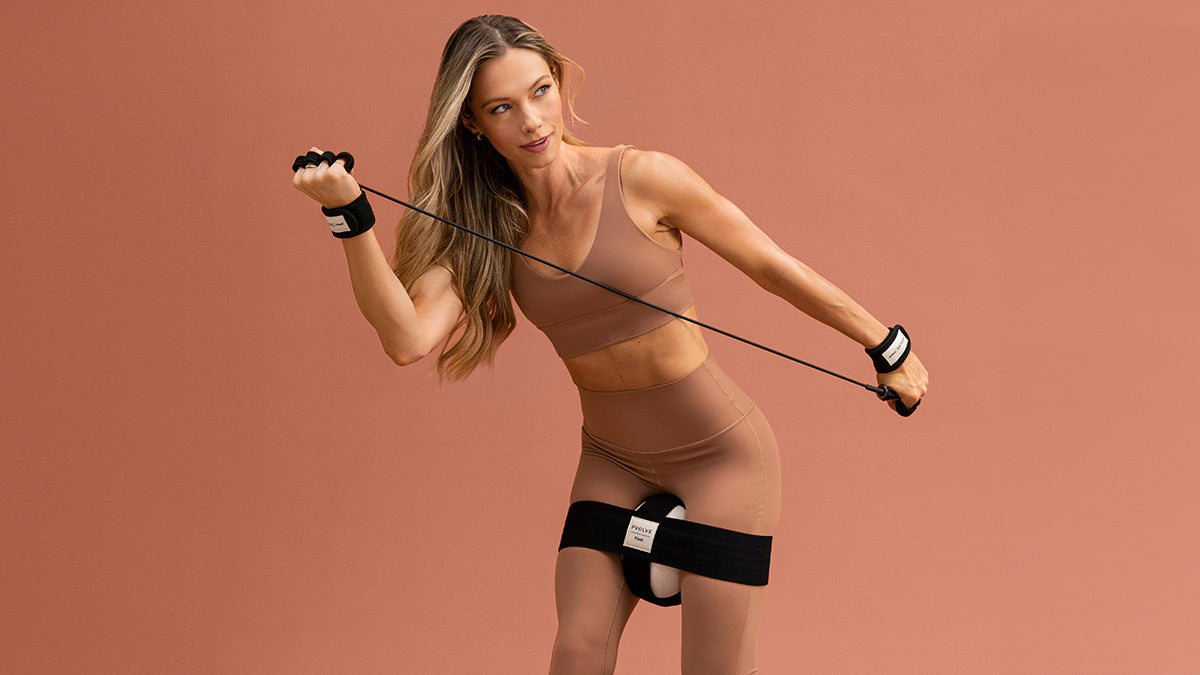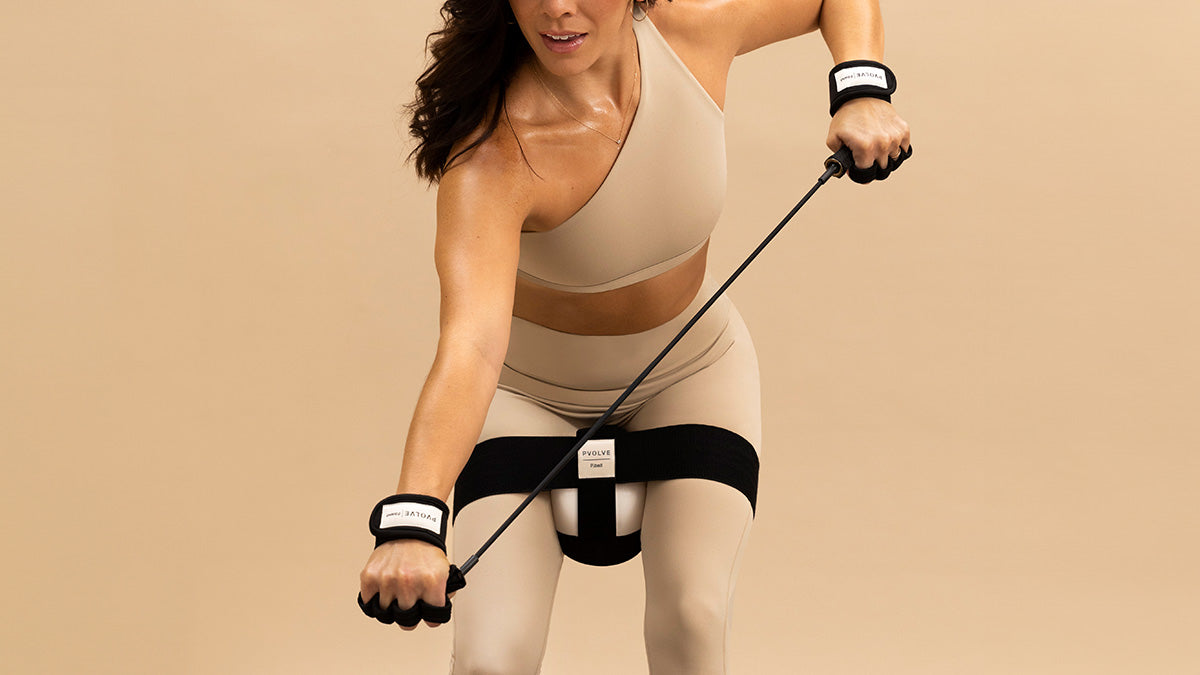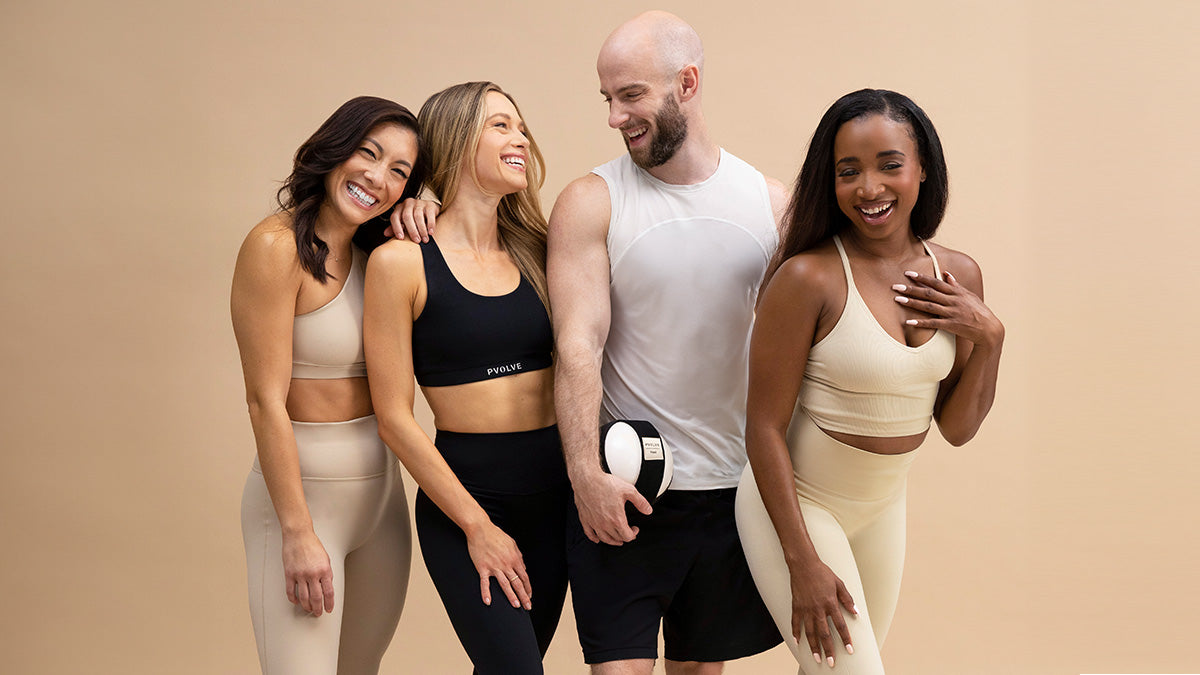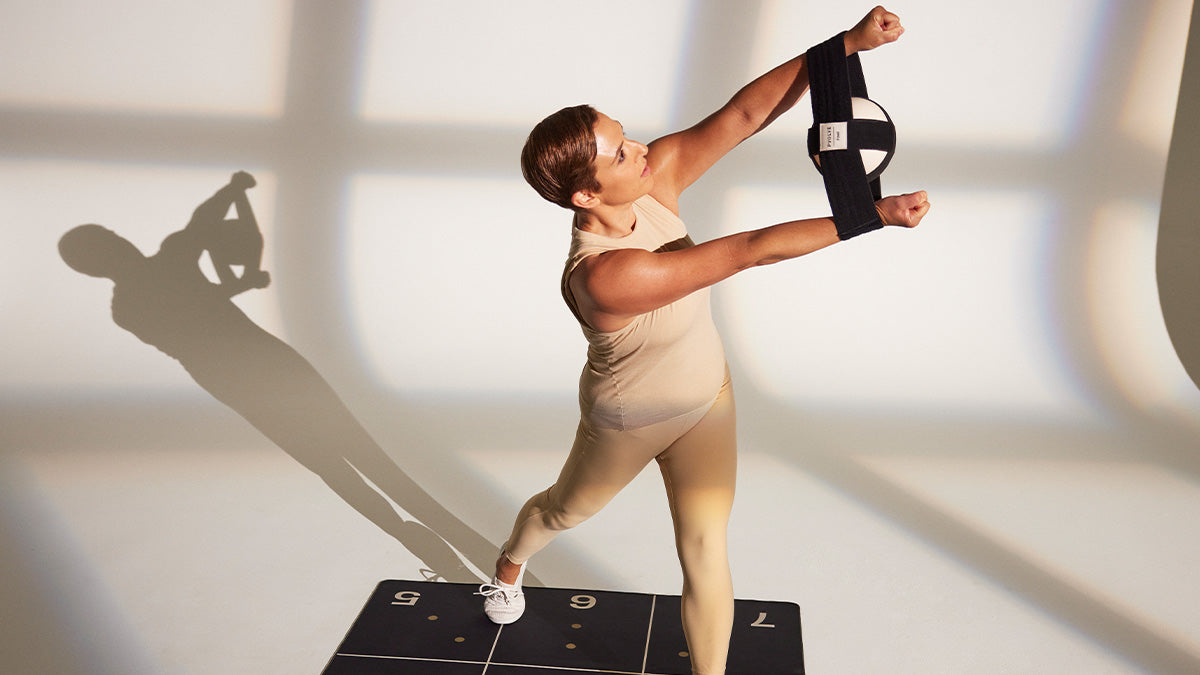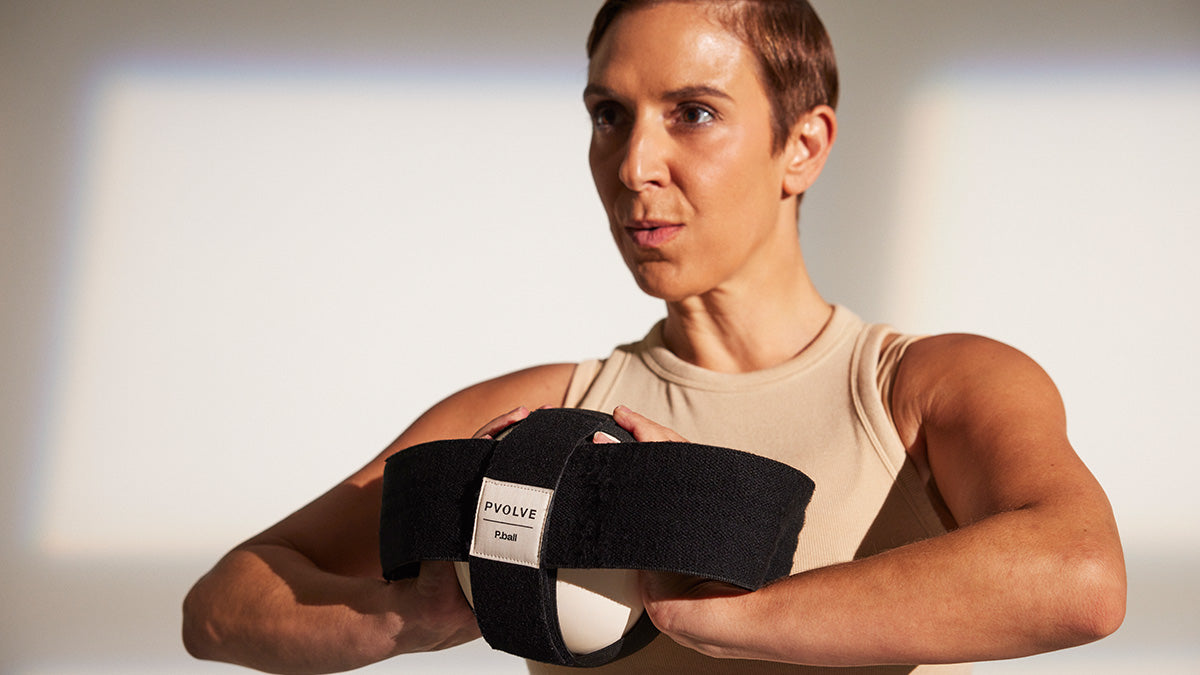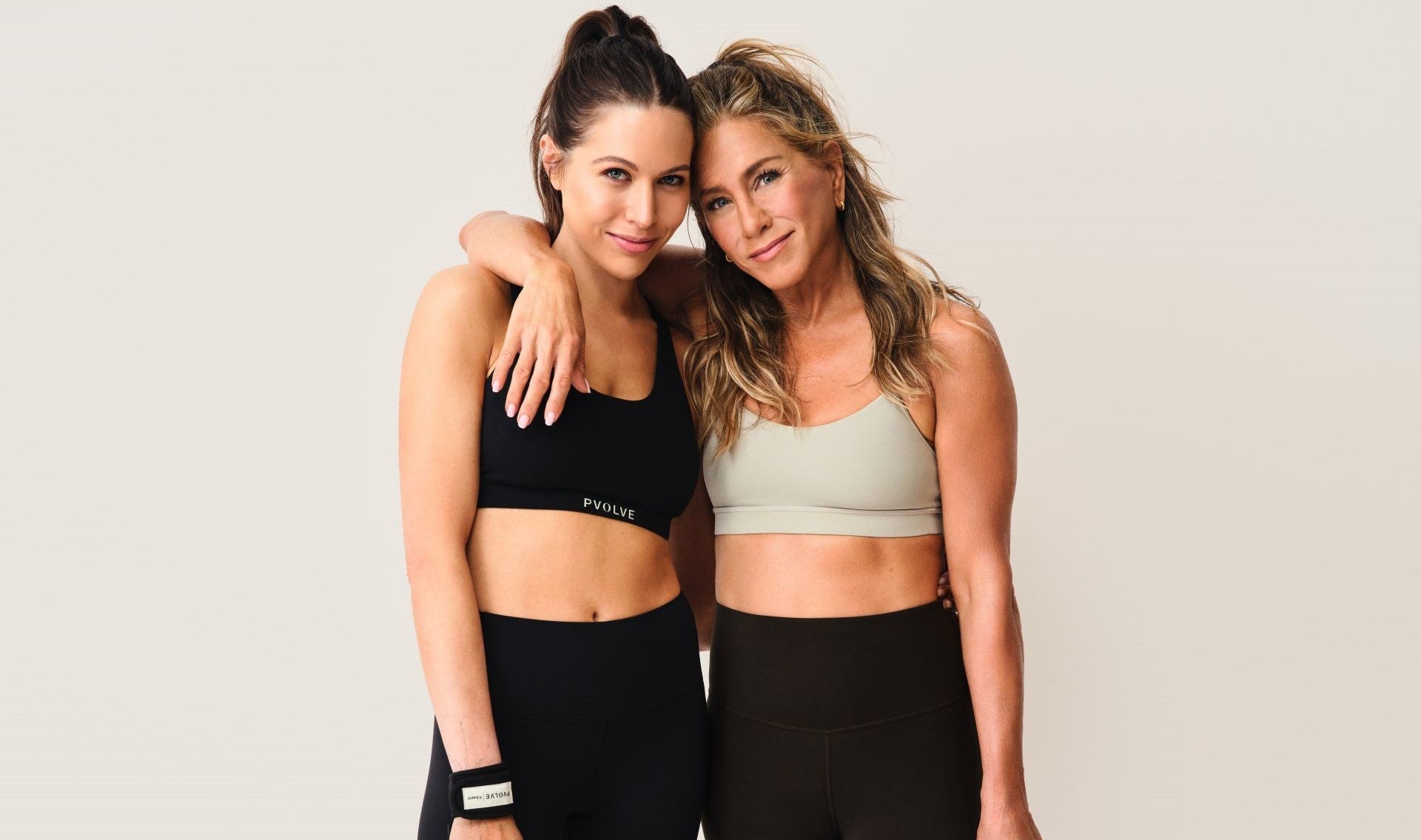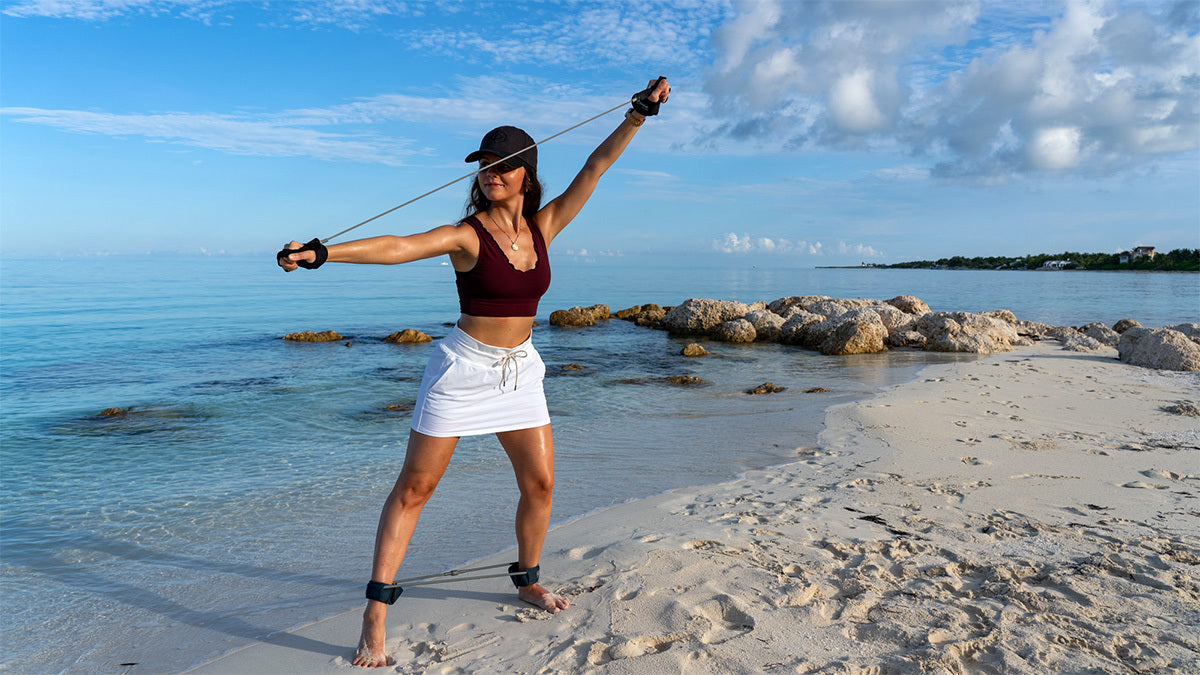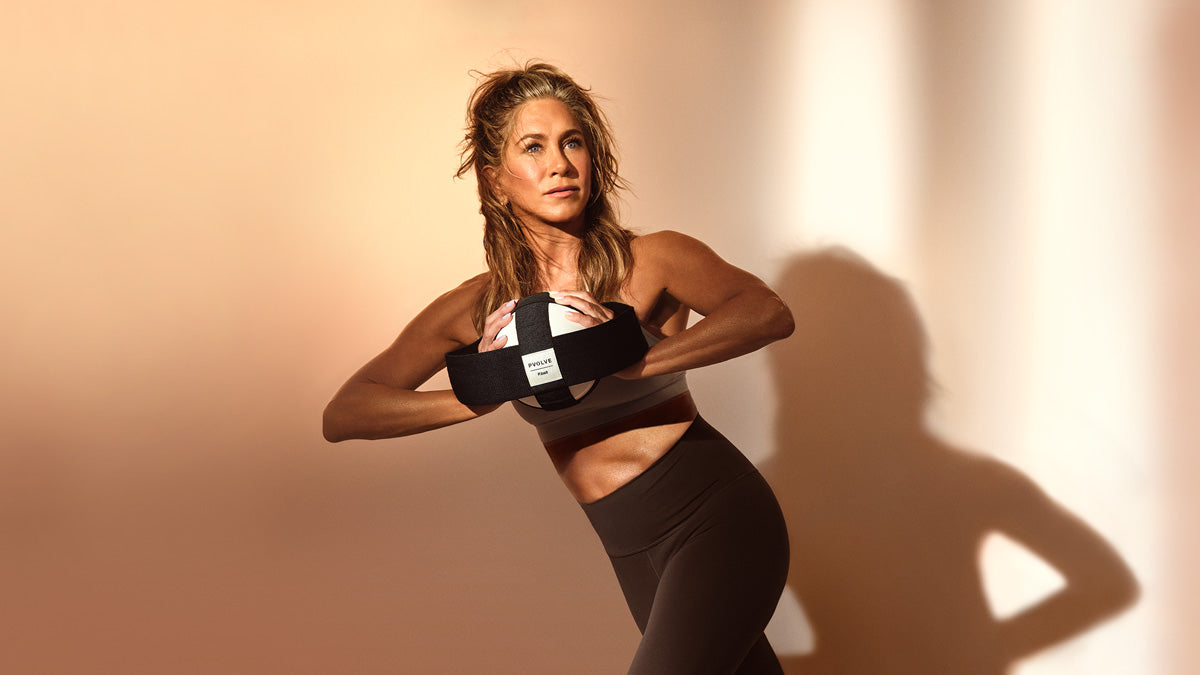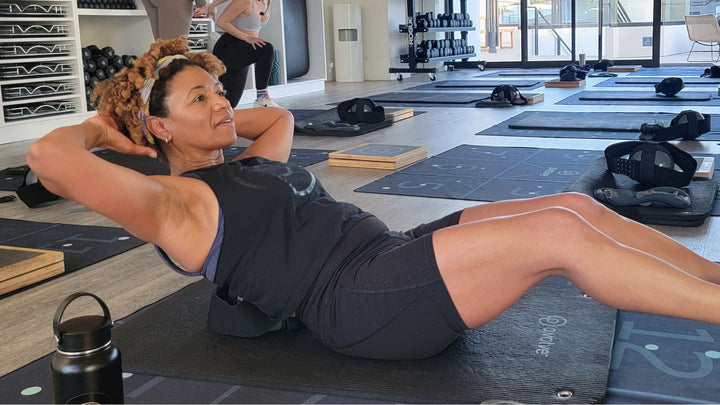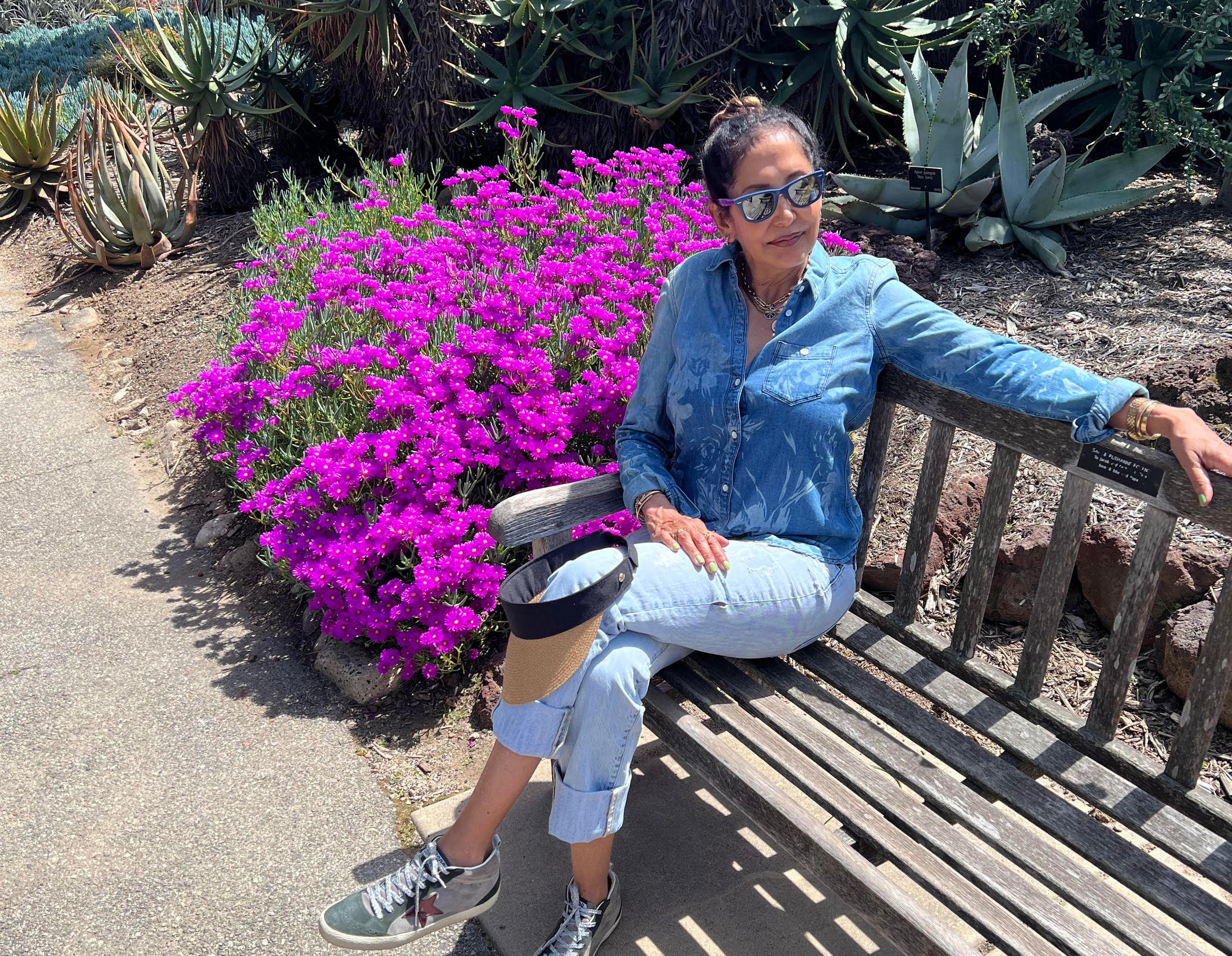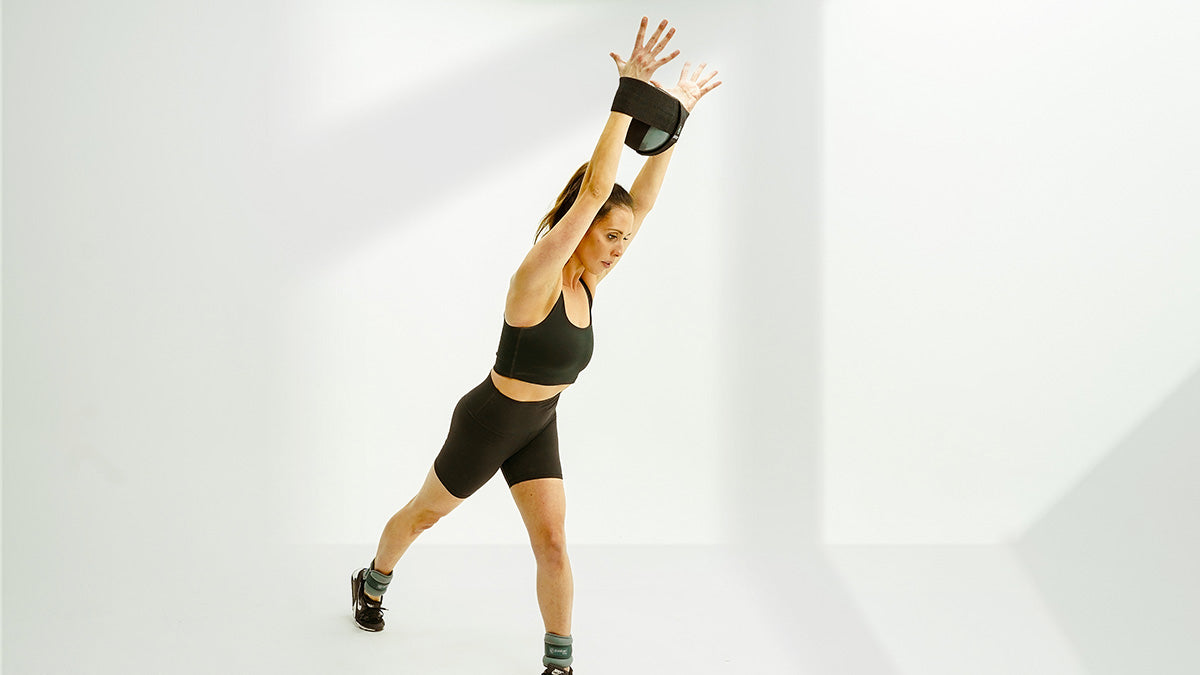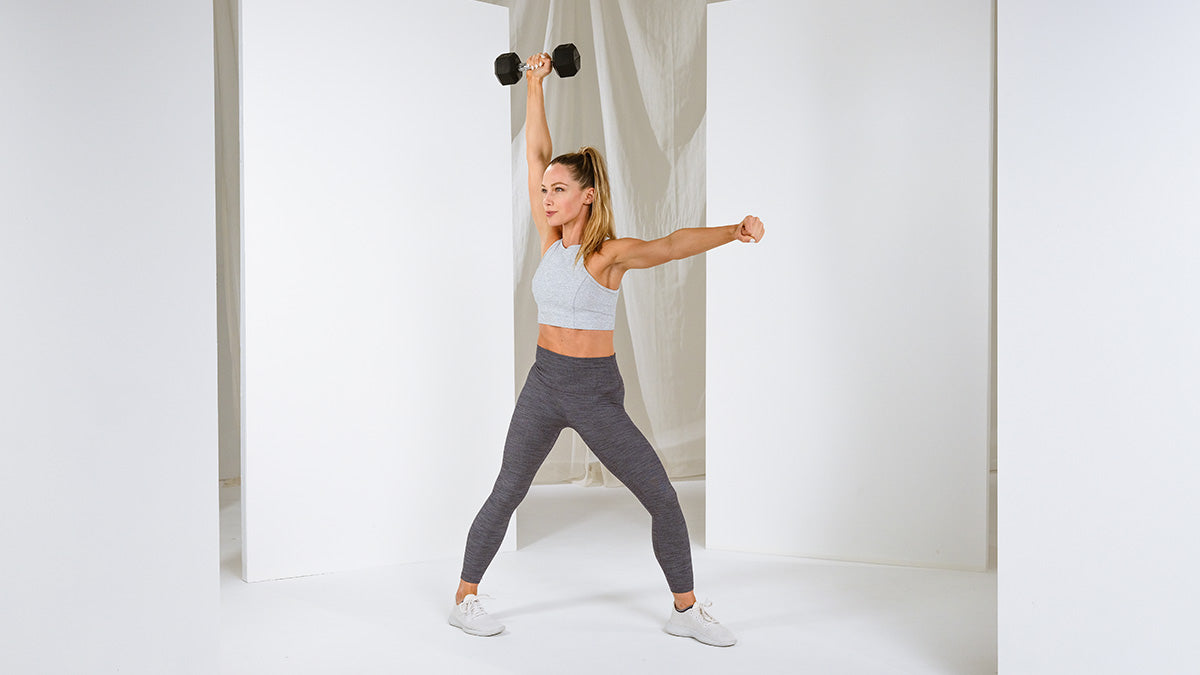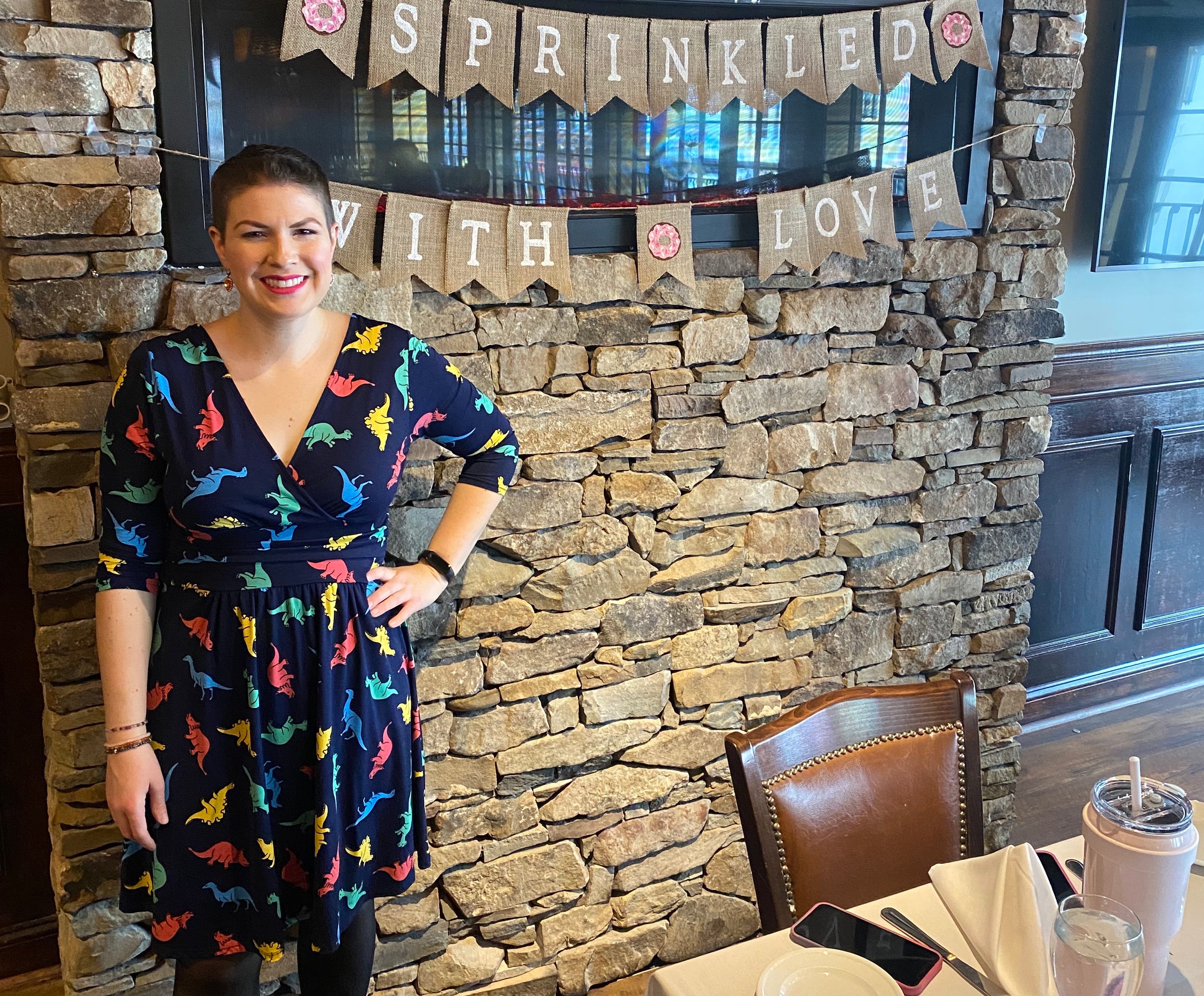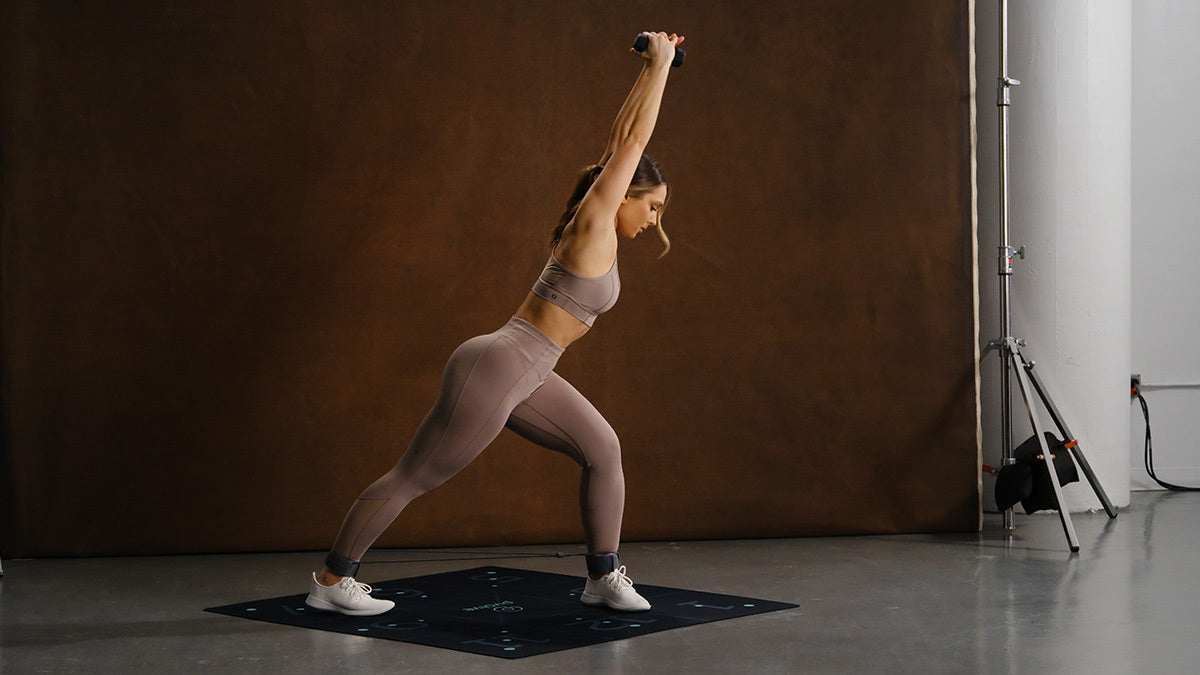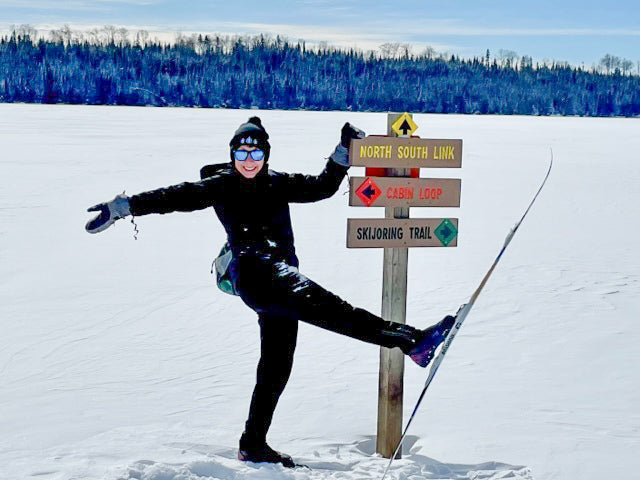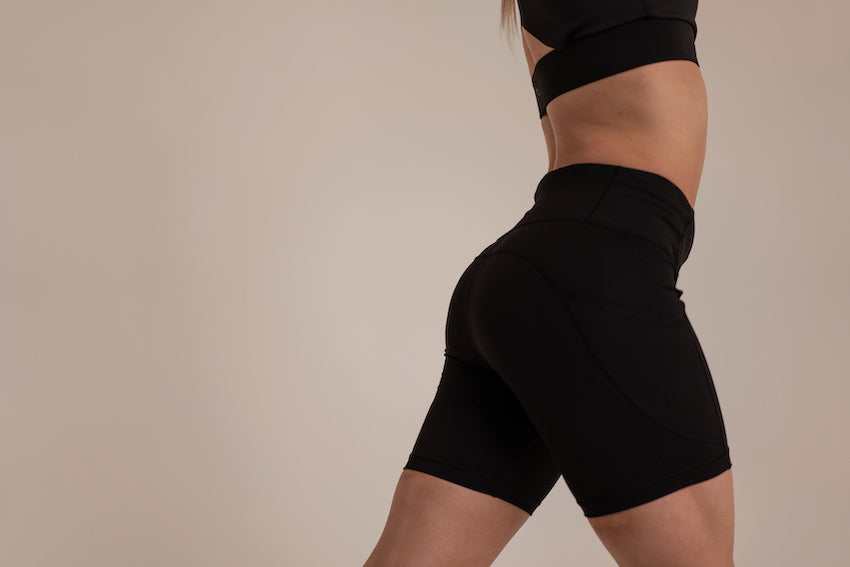-
Shop
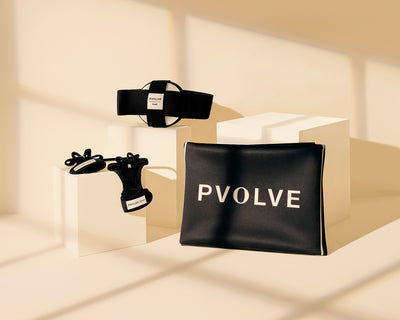 Bundles
BundlesEquipment sets are the best way to start your Pvolve journey, or enhance it.
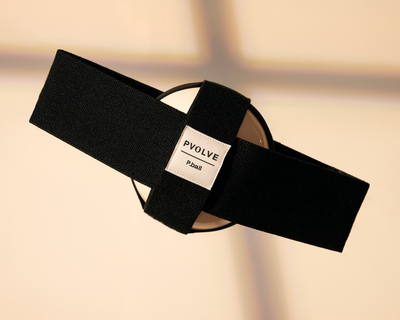 Equipment
EquipmentGet to your goals that much quicker with one-of-a-kind tools.
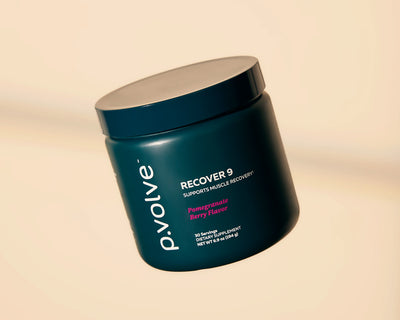 Supplements
SupplementsRecover faster, come back stronger.
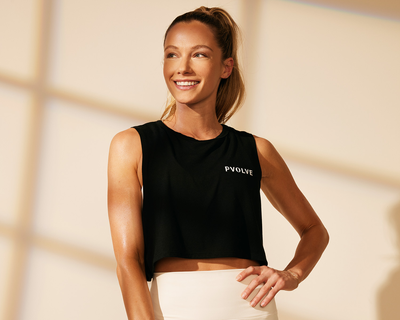 Apparel & Accessories
Apparel & AccessoriesHigh-quality pieces that you can wear beyond your workout.
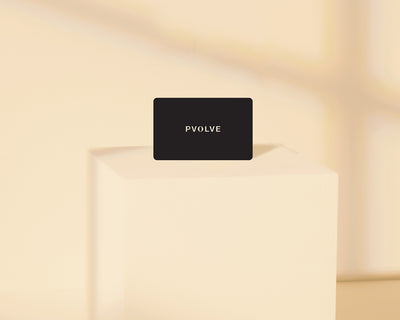 Gift Cards
Gift CardsFor the friend that’s hard to shop for, grab a gift card this holiday!
- Our Method
- Our Story
- Testimonials
Our Trainer's Favorite Pvolve Workouts
It's International Women's Day, which of course is a cause for celebration amongst our fierce team of female trainers. Below you can explore their favorite workouts and hear why they love them! -Antonietta Vicario 51 Minute Full Body Progressive Weight Training "I love this video so much as it is the best of so many worlds; combining Progressive Weight Training for muscle build, signature sculpt moments, and finishing with a long recovery. The vibe is super high-energy with lots of funny moments between Reneé and me and the programming has a few surprise moments to keep you on your toes!" -Dani Coleman 31 Minute Full Body Progressive Weight Training and Cardio Circuit "This is one of my favorite workouts - I had so much fun filming it & it makes me feel strong and powerful!" -Maeve McEwen 50 Minute Lower Body Strength "I first taught this class in the live virtual studio! I was so inspired and excited by how strong and deeply connected the clients were to their muscles that I had to recreate it on-demand!" -Kimmie Prokurat 22 Minute Mat Full Body Release “My favorite video I’ve filmed is my ’22 Min Mat Full Body Release' with the Foam Roller. I loved filming this video because it’s a flow that I often take myself through to unwind at night, so it holds a special place in my heart.” -Linnea Stureson Tolbert 30 Minute Upper Body and Core Sculpt and Burn "This is my workout I’ve filmed because I love the P.3 Trainer core work on the mat and it also has some of my fav cardio moves. It’s short and spicy in the best way!" -Madigan Mayberry 20 Minute Full Body Strength “This is my favorite - it’s the first one I ever filmed on demand!” -Melanie Ramos Mat Lower Body Sculpt "I love this one because I would personally do this video everyday if I weren’t already teaching 15 times a week ha! The best booty and thigh burn in such a short amount of time using a piece of equipment that’s so easy to bring anywhere." -Julie Ann Earls 38 Minute Lower Body Sculpt “I love it because I got compliments from two other Pvolve trainers who did the video themselves and they found it particularly spicy … no higher compliment!” -Cecily McCullough 15 Minute Post-Natal Dynamic Stretch "This first workout was a huge milestone for me both personally and professionally, especially considering it was my first day back to Pvolve! Being only 3 months postpartum myself, I was so excited to be able to bring relatable and thoughtful content to other postnatal moms. It’s something that I am still so proud of today!"
Tips for Getting Started with Pvolve
We know starting something new can be an overwhelming experience. But we’ve got you covered. Here are some tips put together by our Trainers to help you jump right into Pvolve. While you wait for your order to arrive: Get started right away with the 5-Day Body Weight Sculpt series–20-30 minute workouts introducing you to the method. All class series are designed to be completed in sequential order, as each class builds on the last. There’s many more series to complete when your equipment arrives! Filter workouts by ‘No-Equipment’ and explore class types like ‘Sculpt & Burn’ and ‘Sculpt & Stretch’ on your ‘Home’ (link if we can) page. *App Tip: You can hide these workout rows once you’ve completed them! Pvolve is unlike anything you’ve tried before. Learn our foundational moves and unique way of moving in these short, no-equipment tutorials. Check it out in the Tutorials tab under ‘Collections.’ Take a 30-minute No Equipment Zoom class in our Live Virtual Studio–all included in your membership!! Join us on Tuesdays @ 7:30am, Wednesdays @ 8pm, or Saturdays @ 10am EST. Get real-time feedback, adjustments from expert trainers, and meet others in the Pvolve community. Join 1 minute before class starts to get set up and say hello. Camera on is optional, but we love seeing you moving in real time! Use the chat box throughout class to check in with your trainer if you need any modifications. You can sign up here, and learn more about what to expect from LVS here. Equipment delivered! Here’s how to dive right in: Have a Bundle? This cheat sheet has everything you need to know about your equipment, including tutorials and much more! Not sure how to put together a new routine? Find the answer here! If you are newer to exercise, want a detailed intro into our method, or looking for modifications, try our Basic Training classes under ‘Collections’. Prefer to pick your own workouts? Try Jen’s Picks, a collection of all the classes Jennifer Aniston loves. Or, explore our ‘Classes’ page where you can filter based on class length, pace, equipment, class type, and trainer. The workouts are here so you can fit them into your fitness routine as you wish. Learn more about each class type and our pacings here. Join our New Member Q & A in the Live Virtual Studio on Mondays at 5pm EST. Ask our trainers all your burning questions and get to know the rest of our community! Learn more about our Q & A here. Take a Live Virtual Studio class via Zoom ( included in your membership) for real-time feedback and corrections. Join 1 minute before class starts to get set up and say hello. Camera on is optional, but we love seeing you moving in real time! Use the chat box throughout class to check in with your trainer if you need any modifications. You can sign up here, and learn more about what to expect from LVS here. Free 1:1 Zoom Consultation with a Pvolve Trainer Once you have taken at least 3 classes, we recommend you book your complimentary 1:1 Zoom consult with a certified Pvolve Trainer. These are commitment-free conversations designed to help answer any questions you might have like modifications for an injury, finding the right content for your specific goals, finding the right workout intensity, how to progress, and more! You will have 3-months of email check-ins with your trainer to discuss your progress and built-in accountability! Sign up here.
Taking the Mystery Out of The Muscle: Your Pelvic Floor
Valentine's Day is not just about expressing love to others; it's also an opportunity to show some love to yourself. Despite its importance, the pelvic floor is often overlooked and misunderstood–yet is a vital aspect of self-care. Maintaining a strong and healthy pelvic floor and establishing a mind-body connection with it is beneficial for your overall well-being and pelvic health. Your pelvic floor is involved in stabilizing your core, which is important for maintaining good posture and plays an important role with sexual function. Understanding the Pelvic Floor Before diving into the ways Pvolve can benefit your pelvic floor, it's essential to understand the importance of this often-neglected area. The pelvic floor is a bowl or sling-shaped group of skeletal muscle at the bottom of the pelvis. A strong pelvic floor contributes to better posture, stability, and even enhanced sexual function–so it’s kind of important! To learn more about why you should be working on your pelvic floor, check out this Q&A with Dr. Amy Price Hoover from our Clinical Advisory Board. More About Dr. Amy: Dr. Amy Hoover, Chief Physical Therapist owns and operates APHysio LLC, a wellness practice where she specializes in hands-on manual therapy. She also has a special interest in both pre and postnatal care and women's health, plus extensive training in pelvic floor physical therapy. 4 Ways Pvolve Can Help Enhance Your Pelvic Floor 1. Targeted Workouts with Variety Pvolve's workouts are meticulously crafted to engage specific muscle groups, including those in the pelvic floor. Through a combination of resistance training and dynamic movements, Pvolve offers a diverse range of workouts, allowing you to keep your fitness routine interesting and challenging. By regularly switching up your exercises, you target different aspects of the pelvic floor and surrounding muscles, ensuring comprehensive strength and flexibility, together this helps activate and promote better pelvic floor health. 2. Improved Posture Believe it or not, the pelvic floor plays a significant role in maintaining proper posture. Pvolve's exercises emphasize core strength and stability, which naturally contributes to improved posture. As you work on your overall strength, you'll find yourself standing taller and feeling more confident. 3. Increased Circulation The Pvolve method incorporates flowing movements that enhance blood circulation throughout the body, including the pelvic region. Improved circulation is vital for maintaining healthy tissues and muscles, aiding in the prevention of pelvic floor issues. 4. Mind-Body Connection Pvolve places a strong emphasis on the mind-body connection, encouraging you to be mindful of your movements and the muscles they engage. This is where the breath work aspect of Pvolve classes really shines. The “360-style” breathing technique is especially important during the pelvic floor workouts, as it provides heightened awareness, which is particularly beneficial for the pelvic floor, and allows you to focus on these muscles and ensure they are properly activated during workouts. Pvolve Workouts That Help You Target The Pelvic Floor: Pvolve is an excellent tool for pelvic floor health and our Director of Programming Maeve McEwen has provided recommendation for where to start below: Getting Started: Join Dr. Amy for this quick educational video that explains the foundations of the pelvic floor, how to activate these muscles, and why it's important. Building Foundation: Join Dani and Antonietta for 10 short foundational workouts that focus on how to use your breath and pelvic floor in your Pvolve workouts and everyday life: Pelvic Floor Strengthening Series 1 Strengthening: Join Renee for a longer workout that focuses on how to use your breath and pelvic floor as you move through a Pelvic Floor Strength & Sculpt class. Focusing on Release: It's important for the pelvic floor to both contract and release through its full range of motion for optimal function. Join Maeve for this Pelvic Floor Release stretch that focuses on breath work and relaxing the pelvic floor. Combining Pvolve with other self-care practices can enhance overall well-being. See how we’re incorporating the well being of our Body, Mind and Spirit into our routine and entering our "Self-Care Era" this Valentine’s Season. This Valentine's Day, make a commitment to prioritize your pelvic floor health and overall well-being. Incorporating Pvolve into your self-care routine provides a holistic approach to fitness, ensuring that you not only look after your body but also nurture a sense of self-love. As you strengthen your pelvic floor, you'll discover the empowering benefits that extend far beyond physical fitness, ultimately contributing to a happier and healthier you.
3 Ways To Focus On Self-Care This Valentine’s Day
Valentine's Day often conjures images of romantic dinners, bouquets of roses, and sweet gestures shared between couples. However, this day of love shouldn't be confined to romantic relationships alone. In fact, it's the perfect opportunity to redirect some of that affection inward and prioritize self-love through comprehensive self-care. You’ve heard of self-care Sunday, but why limit this to just one day? During this Valentine’s season, we’re entering our “Self-Care Era” and sharing different ways to prioritize your self-care every day to get you feeling like your best self. Let's explore the transformative power of self-care on the body, mind, and spirit, and discover how incorporating Pvolve's innovative fitness approach can amplify the benefits for your mental health. 1. Movement: Pvolve and Physical Well-being When it comes to self-care, it's essential to start with the body—the vessel that carries you through life. Physical well-being is not just about going hard every day; it's about finding an exercise routine that aligns with your body's unique needs. Enter Pvolve, a fitness method designed to sculpt and strengthen without the strain of traditional workouts. This Valentine’s season, take the time to incorporate regular movement into your routine, such as Pvolve, which has been proven to increase strength1, balance3,4, mobility2 and enjoyment of exercise5. At Pvolve, not only can you choose any length workout you want, but there is also a variety of class types. You may want to go hard in a 55-minute Sculpt class one day, and on other days, you may want to take it easy with a gentle 20-minute Recover & Stretch class. Whatever it is, take the time to move your body in a way that makes you feel good. As you engage in these workouts, you not only build strength but also boost your mental well-being. The sense of accomplishment and the positive impact on your body can significantly contribute to improved mood, increased self-esteem, and reduced stress levels–who doesn’t want that?! 2. Mindfulness: Mental Wellness through Mindful Movement Self-care extends beyond physical exertion—it encompasses nurturing your mental health as well. Incorporating mindfulness into your daily life can have a profound impact on your mental well-being. It helps alleviate stress, anxiety, and promotes a sense of calm. The Pvolve Method encourages mindfulness through its intentional and controlled movements that requires you to be present in the moment, paying attention to your body and breath. As you move through a workout and engage in each exercise, you are attuned to the subtleties of your body, fostering a deeper mind-body connection. You can also tune into a Pvolve meditation and give yourself the gift of momentary stillness and mental clarity. 3. Self-Reflection: Nurturing the Soul with Self-Care Rituals Our spiritual well-being is often overlooked in the hustle and bustle of daily life, yet it plays a vital role in overall well-being. Valentine's Day is an opportune time to nourish your soul through self-care rituals that go beyond physical and mental aspects. Start by setting aside time for self-reflection. Grab your morning cup of coffee and connect with your inner self through gentle stretches, setting an intention to carry with you throughout your day. If dynamic exercises are more your speed, throw on a Strength & Sculpt video and as you move through the exercises, embrace the opportunity to celebrate your body, acknowledging its strength and resilience. This act of self-love contributes to a positive self-image and cultivates a deeper sense of self-compassion. We’ve discovered the transformative power of self-care on the body, mind, and spirit, and the unique ability Pvolve has to promote all three. By prioritizing your physical health with purposeful movements, nurturing your mental wellness through mindful practices, and feeding your spirit with self-love rituals, you create a holistic approach to self-care that transcends the traditional Valentine's Day narrative. This Valentine's Day, redefine the celebration of love by turning the spotlight inward. Embrace and enter your Self-Care Era with us. Foot notes: 1 - Preliminary results from a 12-week clinical trial of 72 women ages 40-60 show a significant increase in hip flexion strength and an increase in hip abduction strength for study participants following Pvolve method 4 times per week, 30-55 minutes in length per session vs. standard physical activity guidelines of 150 minutes per week. Results are presented from baseline with no changes observed in the control group. 2 - Preliminary results from a 12-week clinical trial of 72 women ages 40-60 show a significant increase in “sit and reach” mobility, indicating an overall increase in hip, lower, and upper body flexibility for study participants following Pvolve method 4 times per week, 30-55 minutes in length per session vs. standard physical activity guidelines of 150 minutes per week. Results are presented from baseline with no changes observed in the control group. 3 - Preliminary results from a 12-week clinical trial of 72 women ages 40-60 show a significant increase in lateral reach and medial reach, and an increase in anterior reach and combined reach, resulting in a total increase in hip and lower body mobility and stability for study participants following Pvolve method 4 times per week, 30-55 minutes in length per session vs. standard physical activity guidelines of 150 minutes per week. Results are presented from baseline with no changes observed in the control group. 4 - Preliminary results from a survey conducted as part of a 12-week clinical trial of 72 women ages 40-60 show a significant increase in quality of life and energy/fatigue for study participants following Pvolve method 4 times per week, 30-55 minutes in length per session vs. standard physical activity guidelines of 150 minutes per week. Results are presented from baseline with no changes observed in the control group. 5 - Preliminary results from a 12-week clinical trial of 72 women ages 40-60 show significant decrease in cholesterol levels and triglycerides for perimenopausal study participants specifically, measured via bloodwork, following Pvolve method 4 times per week, 30-55 minutes in length per session vs.standard physical activity guidelines of 150 minutes per week. Results are presented from baseline with no changes observed in the control group.
Pvolve’s Healthy Aging Clinical Study: A Q&A
At Pvolve, we set out to help every woman feel powerful in her mind and body throughout her lifetime. And it all starts with addressing the gap in women’s health research. In our Healthy Aging clinical study, we compared Pvolve against standard fitness routines in women 40+, and showed our method improves range of motion, increases muscle mass, and boosts daily energy. We’re asking Professor Francis Stephens, professor of Exercise Physiology and Metabolism whose team conducted the study at University of Exeter, to break down the findings for us.Significant improvements in strength and mobility were seen in participants who followed the Pvolve method, compared to where they were at the beginning of the clinical study. On the other hand, no significant improvements were seen for participants who followed standard activity guidelines of 150 minutes per week of moderate cardio and strength training. *Results pending peer review from 12-wk clinical trial, 72 women 40-60 y.o., 4 Pvolve workouts/wk vs. 150 min/wk standard activity. 1. What makes the University of Exeter a global leader in exercise and sports science? University of Exeter is one of the foremost global sports science teams that’s continually recognized for its world-leading research impact. We are one of the leading Sport and Exercise Sciences research departments in the UK. In the most recent Research Excellence Framework (REF 2021), the UK government’s main measure of university research quality, we ranked 1st in the UK.1 100% of our research has international impact and 99% is internationally excellent.2 1Based on research impact rated 4* in REF 2021. Submitted to UoAA2 Sport and Exercise Sciences, Leisure and Tourism.2Based on research rated 4* and 3* in REF 2021 2. Could you tell us more about your team and what keeps you at the forefront? I lead the Nutritional Physiology Group, a dynamic team of four academic members of staff and several postgraduate and postdoctoral researchers. Our research is focused on human skeletal muscle metabolism in response to exercise and nutrition, how this adapts with exercise training, physical inactivity and aging, and how we can affect adaptation and performance with novel nutritional or exercise interventions. The study was primarily conducted by two PhD candidates, Erika Svensen and Chris Koscien, under the supervision of myself and Professor Benjamin Wall. We stay at the forefront of our research field as we measure muscle metabolism and adaptation to exercise training as directly and precisely as possible with a combination of state-of-the-art techniques that are not routinely found in other UK universities. 3. What makes the Healthy Aging study exciting for you and your group? It is vitally important that people stay healthy for as long as possible throughout their lifetime, particularly women who may spend up to half of their life postmenopause. We know that resistance exercise and strength training have a multitude of beneficial effects on bodily systems including musculoskeletal, cardiovascular, neuromuscular, and cognitive. Even people who are active and have good mobility can benefit from strength training. However, we also know that adherence and compliance to resistance exercise training is not great, so there is a need to develop accessible, home-based resistance exercise training interventions. The Healthy Aging study is exciting for our group as we have seen the health benefits of a novel low impact resistance exercise training program in real-time, and have seen how enjoyable it has been for the women taking part in the study. We’re also very excited to understand more about the biological mechanisms by which training has improved muscle strength and function in pre-, peri-, and post-menopausal women. 4. Tell us what the Healthy Aging study set out to do and the study methodology. Menopause accelerates muscle loss and weakness and ultimately increases the risk of falls and fractures, particularly of the hip. Improving hip muscle strength is associated with improved bone mineral density and performance in physical function and balance tests. The primary aim of the study was to determine if performing Pvolve's low impact, resistance-based program several days a week for 12-weeks could increase strength and stability of the lower limbs in 72 women of menopausal age (40-60 years), compared to regular exercise advice. Forty-five of the participants came to our laboratory to follow Pvolve’s streamed workouts under supervised conditions, while the other 27 participants continued to follow recommended healthy exercise guidelines. A strength of the study was that 98% of all of the supervised sessions were attended by the participants, which is an excellent adherence for this type of research. 5. What were the main study findings you discovered? The main study findings were improved lower limb muscle strength and function by around 20% compared to control. Interestingly, the amount of strength loss observed in women from the age of 25 to 55 is also thought to be around 20%. The increase in strength was associated with around a 10% improvement in lower body balance and mobility, and a 20% improvement in flexibility, both of which would be expected to reduce the risk of falls in later life. There were also increases in lean muscle mass without weight gain, as well as improvements in qualitative measures like improved energy and quality of life. 6. Why was it important to test Pvolve’s method against standard physical activity guidelines? To test the effectiveness of any exercise program, a secondary group is required in order to compare the results over a period of time. We chose to compare Pvolve to standard physical activity guidelines, as these are considered by UK and US governments and leading health authorities to be beneficial for health. 7. How did you measure the changes observed in the participants’ bodies? (how do you measure lean muscle, for example?) Measurements were made using gold standard, validated techniques. Muscle strength and function were measured by asking participants to perform maximal muscle contractions on an isokinetic dynamometer, a device routinely used for muscle testing and rehabilitation by medical and physiotherapy professionals. Balance and mobility were measured using a Y-balance system, a reliable and sensitive measure often used to assess injury risk, where participants balance on one leg and see how far they can move their other leg in various directions. Flexibility was measured with a ‘sit and reach test’. Lean tissue mass and muscle thickness were measured using dual-energy x-ray absorptiometry (DXA) and ultrasound scans, respectively. Measures for quality of life and enjoyment of exercise were assessed by validated questionnaires such as the SF36, a set of easily administered, quality-of-life measures. 8. Women have been underrepresented in clinical research. Why do you think this demographic has been overlooked, and how do studies like Healthy Aging advance women’s health research? Women have certainly been historically underrepresented in sports medicine and muscle and exercise physiology research. Women have constantly changing and complex hormonal profiles throughout their teenage and adult lives, which affect numerous biological systems within the body. One thought is that scientists have avoided using women as research participants due to difficulties in controlling for changes in such hormones (e.g. changes in estrogen across the menstrual cycle), as well as difficulties in interpreting results of experiments that may have been affected by changes in such hormones. Therefore, all too often research findings from exercise studies involving men have been applied to women. However, the research climate is certainly different now and scientists are routinely researching the effects of female sex hormones on exercise performance, muscle metabolism, and adaptation to training across the life course. Indeed, Pvolve has funded research with our group investigating how changes in hormones across the menstrual cycle can affect how muscle responds and adapts to exercise training and nutrition in young women. 9. Could you speak to the efficacy of Pvolve’s equipment used in the study? While the study wasn’t aimed to test the efficacy of Pvolve’s equipment, the increases in muscle strength and function in response to the Pvolve program is similar to the increase shown in studies using more gym-based heavy resistance programs. This would suggest that when applied in a focused and supervised setting, Pvolve equipment can be just as effective as weight-lifting equipment you might find in a commercial gym. 10. Why should anyone care about their strength and lean muscle as they age? Aging, and in particular menopause, accelerates muscle loss, weakness, immobility, and ultimately increases the risk of falls and fractures. These declines invariably lead to an inability to perform tasks of everyday living, resulting in a loss of independence and quality of life. Anyone wishing to increase their lifespan should also be aiming to increase their ‘healthspan’ i.e. living healthier for longer. 11. What’s the take home message for someone interested in Pvolve’s method? What can they understand from the study results? The Pvolve program is a simple, online-streaming, low impact resistance program that can be used as an option to effectively increase muscle strength, function and balance, which may lead to improved overall health and wellbeing. 12. Why should academic universities partner with companies on research like this? Companies such as Pvolve develop exercise programs and equipment through years of experience and innovation. Academic universities are ideally placed to help test the efficacy of such programs and equipment. As well as being able to conduct high-quality, randomized controlled clinical trials, academic institutions have state-of-the-art technology which can help in the development of future programs and equipment to make them as beneficial as possible. In addition, by funding postgraduate PhD students to conduct such research, companies contribute directly to training the next generation of researchers and innovators in the field. Further reading To explore the classes check out the University of Exeter x Pvolve Healthy Aging Calendar To learn more about this milestone research and how women can improve fitness and health during their midlife years, please visit: https://www.pvolve.com/pages/method
Healthy Aging Clinical Study
What Pvolve’s New Healthy Aging Study Means for Menopausal Women Milestone research shows that using Pvolve can improve strength, lean muscle mass, balance, and more in women over age 40. For years, Pvolve members have known that our functional fitness-based Method tones, strengthens, and sculpts at any age—including pre-and post-menopause. And now a clinical study backs up those results. The recent Healthy Aging Study, conducted by the University of Exeter, found that perimenopausal and menopausal women who consistently perform Pvolve workouts have increased lower body strength and muscle mass compared with those who follow standard physical activity guidelines. This study not only shines a light on the importance of lower-impact functional fitness on women’s health, but it also helps to fill a devastating gender gap in sport and exercise science research, since women are generally underrepresented in these studies. Digging into the Research Significant improvements in strength and mobility were seen in participants who followed the Pvolve method, compared to where they were at the beginning of the clinical study. On the other hand, no significant improvements were seen for participants who followed standard activity guidelines of 150 minutes per week of moderate cardio and strength training. After 12 weeks, the women engaged3 with Pvolve showed considerable improvements in their fitness and health. These included: Boosted energy Study subjects who followed the Pvolve Method experienced impressive feel-good benefits, including a 23%8 improvement in fatigue and a 7.2% improvement in quality of life. Increase in strength Women naturally lose 3-5% of muscle mass per decade, starting at age 30, but Pvolve’s workouts are shown to help offset some of this loss. According to the study, women in the 12-week Pvolve program experienced a significant increase in lean muscle mass9 and improved their lower body strength by 19%5. Better balance and flexibility This increase in strength was associated with a 10%7 improvement in lower body balance and mobility and a 21%6 improvement in flexibility. Along with mobility and stability (which also improved for the Pvolve group), balance and flexibility are vital for helping to reduce the risk of falls later in life. Positive health outcomes Women in the Pvolve group showed a significant decrease in cholesterol levels and triglycerides (a type of fat found in the blood10). Healthy levels of cholesterol and triglycerides are linked to a lowered risk of stroke and heart disease—the number one killer of women. *Compared with the control group Menopause’s Effect on Fitness Level We know about the hot flashes and mood swings, but for many women, the effect that menopause has on their fitness level can still take them by surprise. Even for those who have been dedicated exercise enthusiasts for most of their life, the menopause transition tends to come with a sharp plummet in strength and muscle. You can blame your hormones. When estrogen levels drop during menopause, visceral fat (the type of fat that shows up around the belly) increases while muscle mass, strength, and bone mass density take a dive. And the average weight-loss focussed workout program—heavy on cardio and high-impact moves—doesn’t always help women regain their former lean muscle and strength. Instead, women should look for a workout that builds strength and lean muscle. As shown by the Healthy Aging Study, Pvolve checks those boxes. The functional fitness-based Method focuses on low-impact moves that deeply engage all of your muscles to strengthen while also increasing mobility—all while being gentle on the body. Why Muscle Strength Matters After Menopause Focussing on strength is important at any age, but many experts argue that it’s a necessity once you reach midlife. “Aging, and in particular menopause, accelerates muscle loss, weakness, and immobility, and, ultimately, increases the risk of falls and fractures,” says Francis Stephens, PhD, lead study author and professor of sports and health sciences at University of Exeter. “These declines lead to an inability to perform everyday tasks, resulting in a loss of independence and quality of life.” Women may spend up to half of their lives post-menopause, so committing to a workout routine that helps increase strength, balance, and flexibility could benefit you for decades to come. The Importance of the Healthy Aging Study At Pvolve, we’re thrilled by the results of the Healthy Aging Study. It shows that our Method is incredibly effective for women in midlife. But more importantly, we’re proud that this study exists in the first place—and thankful for the support from Pvolve members that enabled us fund this research. Despite making up about 50% of the population, women have historically been underrepresented in all medical research, including exercise science studies. One 2021 study in Women in Sport and Physical Activity Journal found that while 31% of sport and exercise science publications included only males, just 6%1 of publications included only females. This can have potentially dangerous consequences. “Unfortunately, all too often, research findings from exercise studies involving [just] men have also applied to women,” says Stephens. By investing in women’s health research, we’re guaranteeing a better understanding of the effect that female sex hormones have on exercise performance, particularly for those ages 40+. This is especially important considering the population of older adults is increasing (in 2020, about 1 in 6 people in the United States were age 65 and over.) And as leaders in the fitness space, Pvolve is dedicated to helping everyone live all of their years in good health. Further reading How women can improve fitness and health during their midlife years, Your Top Healthy Aging Questions, Answered by Dr. Francis Stephens. To explore the classes check out the University of Exeter x Pvolve Healthy Aging Calendar To learn more about this milestone research and how women can improve fitness and health during their midlife years, please visit: https://www.pvolve.com/pages/method About Pvolve Pvolve is an omnichannel fitness company with a science-led method that pairs low-impact, functional movement with patented resistance equipment to sculpt, strengthen, and restore the body while enhancing mobility and flexibility. After being introduced to functional fitness in 2017, founder Rachel Katzman was determined to help others experience an approach that respects the body's holistic needs while making you look and feel great. The Pvolve Method is supported by a Clinical Advisory Board of doctors, as well as highly credentialed trainers, to offer effective workouts that help you break a sweat, not your body. In June 2023, world-renowned actress, producer, and director, Jennifer Aniston, officially partnered with Pvolve after falling in love with the method as a member. Through its hybrid fitness model, Pvolve can be experienced through a streaming membership that offers over 1,300 on-demand classes, a two-way, live virtual studio, and targeted series, all available via the web and mobile apps. Additionally, Pvolve has physical studio locations in New York, Chicago, Los Angeles, and franchises across the US and Canada, with more than 35 locations in development. For more information, please visit https://www.pvolve.com/, https://pvolvefranchise.com/. About University of Exeter The University of Exeter combines world-class research with excellent student satisfaction, from our campuses in the South West of England, in Exeter and Cornwall. We are one of the very few universities to be both a member of the Russell Group and have a Gold award from the Teaching Excellence Framework (TEF), evidence of our established international reputation for excellence in both teaching and research. Our success is built on a strong partnership with our students and a clear focus on high performance. Foot notes: 1 - Souce: Cowley, Emma & Olenick, Alyssa & Mcnulty, Kelly & Ross, Emma. (2021). “x. 29. 1-6. 10.1123/wspaj.2021-0028. 2 - Source: Austad SN. Why women live longer than men: sex differences in longevity. Gend Med. 2006;3(2):79–92. 3 - The 12-week clinical trial conducted by the University of Exeter and Pvolve included 72 women ages 40-60 years old, comparing 4 Pvolve workouts per week of 30-55 minutes in length to standard physical activity guidelines of 150 minutes per week. 4 - Subjects in the control group followed physical activity guidelines of 150 minutes per week consistent with guidelines and recommendations from the American College of Sports Medicine (ACSM), Centers for Disease Control and Prevention (CDC), American Diabetes Association (ADA), and American Heart Association (AHA). 5 - Preliminary results from a 12-week clinical trial of 72 women ages 40-60 show a significant increase in hip flexion strength and an increase in hip abduction strength for study participants following Pvolve method 4 times per week, 30-55 minutes in length per session vs. standard physical activity guidelines of 150 minutes per week. Results are presented from baseline with no changes observed in the control group. 6 - Preliminary results from a 12-week clinical trial of 72 women ages 40-60 show a significant increase in “sit and reach” mobility, indicating an overall increase in hip, lower, and upper body flexibility for study participants following Pvolve method 4 times per week, 30-55 minutes in length per session vs. standard physical activity guidelines of 150 minutes per week. Results are presented from baseline with no changes observed in the control group. 7 - Preliminary results from a 12-week clinical trial of 72 women ages 40-60 show a significant increase in lateral reach and medial reach, and an increase in anterior reach and combined reach, resulting in a total increase in hip and lower body mobility and stability for study participants following Pvolve method 4 times per week, 30-55 minutes in length per session vs. standard physical activity guidelines of 150 minutes per week. Results are presented from baseline with no changes observed in the control group. 8 - Preliminary results from a survey conducted as part of a 12-week clinical trial of 72 women ages 40-60 show a significant increase in quality of life and energy/fatigue for study participants following Pvolve method 4 times per week, 30-55 minutes in length per session vs. standard physical activity guidelines of 150 minutes per week. Results are presented from baseline with no changes observed in the control group. 9 - Preliminary results from a 12-week clinical trial of 72 women ages 40-60 show a significant increase in lean mass, measured by a body composition (DEXA) scan, for study participants following Pvolve method 4 times per week, 30-55 minutes in length per session vs. standard physical activity guidelines of 150 minutes per week. Results are presented from baseline with no changes observed in the control group. 10 - Preliminary results from a 12-week clinical trial of 72 women ages 40-60 show significant decrease in cholesterol levels and triglycerides for perimenopausal study participants specifically, measured via bloodwork, following Pvolve method 4 times per week, 30-55 minutes in length per session vs.standard physical activity guidelines of 150 minutes per week. Results are presented from baseline with no changes observed in the control group.
Pvolve Founder Rachel Katzman & Jennifer Aniston’s Workout Routine, Now Available to You
Rachel Katzman & Jennifer Aniston’s Monthly Workout Routine Ever wondered what it’s like to workout like Jen? Well, now you can. Jennifer Aniston and Pvolve founder Rachel Katzman teamed up to curate a 30-day fitness calendar of their favorite Pvolve workouts. These two wellness-centric leaders are no strangers to a great workout program. Check out all the details below. What makes this Monthly Workout Plan different? Rachel and Jen have created a functional fitness routine that incorporates full body workouts for women and men using the science-backed Pvolve Method. The calendar is designed around their favorite Pvolve workouts that they integrate into their at-home functional fitness routines. What types of workouts should I expect to experience? This month-long calendar is filled with 20+ workouts curated to build full-body strength, mobility and flexibility. Included in the calendar you will find full body, lower body and upper body workouts for women and men, all using Pvolve’s revolutionary Method and proprietary resistance-based equipment. What types of results will I get from this? What makes a great workout routine is consistency. By following along with this monthly workout plan, you can expect to feel stronger both mentally and physically. Some of Jen and Rachel’s favorite Pvolve benefits include increased strength, mobility, and tone. Hear it from Jennifer Aniston herself: “I’m in better shape than I was in my 20s; I feel better in mind, body, and spirit. It’s all 100% better”. What equipment do I need for this? While you can easily supplement equipment for a few of the workouts in the program, we recommend starting with Pvolve’s Total Transformation Bundle to get the most out of this monthly workout plan. Download the Workout Calendar!
“We finally got the toned results we dreamed of” - Olivia & Victoria S
Twins Olivia and Victoria S.,30, of Miami, FL are very family-oriented, so it’s no surprise that they do Pvolve together. Victoria discovered the Method first, and Olivia quickly joined her. After experiencing body-changing results, they can’t imagine not having the Method in their lives. We live very social, active lives in Miami, and we’re always looking for ways to stay in shape. We played volleyball and tennis growing up, and as adults we’ve tried multiple different workouts and classes, from running and yoga to cycling and boot camp-style classes. We sweated our booties off and ran what felt like a million miles on treadmills, but we still weren’t completely satisfied with the results. We’re both naturally slim, so weight loss has never been a concern, but we did want to find that unicorn of a workout that tones, strengthens, and elongates you. We’re in our swimsuits a lot, so we wanted to feel and look good! Finding “the one” We noticed that a friend of ours was seeing amazing results—her body looked incredible—so when she shared that Pvolve was her secret for her defined muscle, Victoria knew she had to give it a go. She started streaming the workouts in the living room during the pandemic, but Olivia wasn’t convinced. She thought that the moves, like internal and external rotations, seemed strange compared to the workouts we were used to. But once Victoria started to get the results we’d been longing for, we were both on board! We started doing Pvolve every morning together for 30 minutes, and we haven’t looked back. We took to the workout pretty quickly, maybe because of our exercise background, but it did take a bit of practice to get accustomed to some of the moves, especially the ones that require balance. Thankfully, the Pvolve trainers are amazing at walking you through the movements, so we quickly started to feel comfortable. On the go We travel a lot, and Olivia especially is always on the move, since her boyfriend lives in New York City. Finding a workout that we could travel with was important to us and Pvolve fit that requirement perfectly. You can do the live and on-demand classes wherever you are since you don’t need a large space to work out, and the equipment is so easy to pack in your carry-on. We’ll take a few pieces, like the P.band or light ankle weights with us, and exercise from our hotel room or even on Olivia’s boyfriend’s balcony. This has raised some eyebrows with TSA! They’ll question us about the gear, but we’re more than happy to spread the word and let more people know about Pvolve. Results we’d dreamed about Like we had hoped, Pvolve’s functional movements help lift and lengthen in a way that we haven’t experienced with any other workout. From our arms to our glutes, we feel tighter and stronger. It didn’t happen overnight, but after about five months of consistently working out (we’ll typically do Pvolve every other day), we started to see the physical benefits. The core-focussed moves have flattened out our stomachs and given them a more subtle tone. The Pvolve Method has also helped to emphasize our curves and shape a little bit more—we’ll take that! Plus, after working in the office all day, it feels so good to stretch and open up your hips. The best cheerleaders We can’t gush enough about the Pvolve trainers. Their energy is contagious, and they’re so supportive in helping us reach our goals. If we’re doing a live virtual class, we’ll keep our camera on for personal trainer-level guidance. And if we get a move wrong, they’ll call it out—but in a nice way. Plus, they’re all ridiculously friendly. We’ll chat on social media, and we’ve even met up in real life for brunch. We just hope that one day a studio opens in Miami! A Pvolve session is such a mood boost—we leave each class feeling energized and happier. And honestly, it’s been a confidence boost too. Now when we get into our swimsuits, we’re proud to show off the results of our work! 5 of our Pvolve highlights 1. Discovering new ways to tone our core Pvolve isn’t a normal ab workout—you won’t be doing crunches or lying on your back doing the bicycle move. Instead, the Method’s movements use exercises like standing ab workouts–and wow, they’re effective! 2. Strengthening our body for life We’re young, so we’re not at the point where we’re worrying about our balance. But we know that the functional movement we’re practicing now is going to pay off throughout our lives. Even with simple movements, like lifting up a box and putting it on a shelf, we notice a difference in our posture. 3. Learning the sit It’s such a unique move. It’s not a squat, but it’s similar except you raise your arms up at the same time. It fires up the glutes, elongates your torso, and gives you an amazing stretch. 4. Finding a travel-friendly workout We’re frequently on the go, so we’re so thankful that we can easily pack Pvolve’s equipment in our suitcase and exercise from our hotel rooms. 5. Feeling confident in a bikini We’re in our swimsuits a lot (we live in Miami!) and thanks to Pvolve, we feel amazing in our bodies now. No other workout program has ever delivered toning results like this!
How I Pvolve: Travel-Friendly Workouts for Summer Vacation
Claudia Pfau is a marketing consultant, content creator, longtime Pvolve member, and the co-founder of Minded Society. When she isn't dreaming up marketing campaigns or hosting Zoom parties, you can find her traveling the world with her husband, trying all the latest wellness trends, or taking her favorite ballet class. Claudia shares everything you need to know about her favorite travel workouts below. My Favorite Travel Workout I never thought I’d be one to work out on vacation, but here I am, 5 years (and hundreds of workouts) into my Pvolve journey, and I just can’t get enough. My husband and I love to travel, so I’m often out of sync with my home routine – especially in the summer! But for a creature of habit like me who loves to start her day with a quick morning workout, it’s essential to have a travel-friendly program I can rely on, even while on vacation. Pvolve’s functional strength training workouts not only help my body feel strong and lengthened, but they keep my mind happy and energized without having to sacrifice precious vacation time. No matter where I am in the world – a hotel room, boat, beach, mountain, you name it – I love that I can easily and quickly incorporate functional movement into my day. I just pack a few pieces of Pvolve equipment, load up my on-demand library, and pick a quick workout routine that fits into my travel schedule. Best workout equipment for travel As much as I love to overpack, I’ve had some unfortunate run-ins with missing luggage over the years, which means I’m a carry-on girly for life now. So when it comes to packing Pvolve equipment, I have to be strategic with both size and weight. My 3 go-to pieces of equipment for travel: P.band — perfect for a quick arm workout Heavy Ankle Band — keeps my booty in check P.3 Trainer (I pack one ankle cuff, the shorter band, and the handle) — amazing for full-body movement. All three pieces are light and compact, making them super easy to pack. All I do is stuff them either in my shoes or purses or even in my backpack if the space in my carry-on is tight. And there are tons of incredible workouts that require no equipment at all and are just as effective as the rest. My favorite travel-friendly workouts I love that Pvolve has an entire Travel-Friendly selection of workouts along with the On-The-Go Series for travel lovers like me. It makes picking my workouts so much easier. While on vacation, I try to sneak in 3 workouts a week that are 30 minutes or less and target a couple of muscle groups at once. It’s all about efficiency! I typically look for functional core workouts, low-impact leg workouts, and quick ab and arm workouts. Major plus if these are mostly standing because I don’t always have a mat with me! If you have access to a hotel gym, I’d also recommend doing a quick Progressive Weight Training workout like this one with Maeve. Not only are these workouts equal parts fun and challenging, but they leave me feeling strong, stretched out, and ready for the day in less than 30 minutes. How I workout while traveling Tbh, I’m not perfect by any means when it comes to working out while traveling. But the one thing that motivates me the most is how much better my mental health is after a quick sweat sesh. Of course, the physical results are wonderful too. Hello, toned muscles! But what I really focus on is how beneficial the Pvolve Method is for my overall mood and well-being. I’m a totally different person when I make time for myself in the morning with movement that brings me joy. And it makes my travel experience that much better. (Along with some much-needed rest days!) A few things that help keep me on track: Packing equipment - if I bring it, I might as well use it! Picking my workout the night before Working out first thing in the morning Scheduling a 30-minute Live Virtual Studio class if it fits into my schedule I’m beyond grateful I found Pvolve 5 years ago, and I’m even more grateful that this program easily fits into my on-the-go lifestyle. Hopefully, you’ll find me Pvolving all over the world for years to come.
Welcome to Pvolve, Jennifer Aniston
We’re excited to share that Jennifer Aniston is officially a part of the Pvolve family! We’re still pinching ourselves as we welcome her to the team. Jen started as a member, and is now joining Pvolve as we enter our next chapter. We couldn’t be more thrilled to partner with her. Jennifer Aniston's Workout Routine with Pvolve Jen’s love for Pvolve started in 2021 when she was recovering from a back injury. “I don’t feel like myself when I’m not able to workout,” says Aniston. “I had a friend who had already been doing Pvolve and not only did I notice her complete transformation - physically in her energy level - but she also explained that Pvolve is functional fitness that respects where your body is at and allows you to work around your current limitations.” Aniston ordered the equipment, started streaming workouts at home, and “fell in love with the program and how it makes you work hard and delivers results…It’s completely different from anything I’d tried before and that’s what made me want to get involved with the company,” adds Aniston. Fun fact: The P.band, P.ball, and P.3 Trainer are some of Aniston’s favorite pieces of equipment. She especially loves to incorporate pieces that work the core and arms. The Experts Behind the Method Last year, Aniston added in-person training with Head Trainer, Dani Coleman. “I joined the Pvolve team in 2020, it’s always a thrill and so rewarding to see how the method impacts people’s lives, and Jen is no exception.” The method’s equal emphasis on results and longevity changed how Aniston thought about working out and led to a transformation of her relationship to fitness. Science and expertise have always been at the center of the Pvolve Method, with a Clinical Advisory Board made up of medical doctors and experts in women’s health, kinesiology, biomechanics, physical therapy, and a roster of highly credentialed trainers. Aniston will add to our team of experts providing guidance on product development, programming strategy and marketing efforts to build greater brand awareness and make Pvolve a household name. “I was blown away when I found out that Jennifer Aniston was a secret streamer and doing the workouts at home,” says Rachel Katzman, Founder of Pvolve. “The fact that someone so advanced in her fitness journey and with access to a world of options, fell in love with the Pvolve Method after experiencing its benefits, is a dream come true. I’m so excited to see what we do together.” Get your equipment or visit a studio and get started with the method that changed Jen’s relationship to fitness today.
“With Pvolve, I’ll never reach a workout plateau again” - Deidra G
For Deidra G., 55, Pvolve started as a way to fill in a gap in her workout schedule, but three years later, she can’t imagine her life without the method—or the results it delivers. I’ve never had trouble finding ways to be active. Whether I was running, skiing, hiking, or going to the gym, I have always made working out a priority. But when the pandemic happened, even the hiking trails near me in Los Angeles closed. For the first time, I found myself searching for ways to stay fit. Then, I came across an ad for Pvolve online one day. The movements looked interesting and completely different from any other exercise I had tried, and since the classes were online, I could work out at home. Better yet, they were offering a discount for medical care workers (I work in radiology). I decided to go all in, and invested in a starter package that included hand weights, ankle bands, and the P.ball. Healthy movement I began with routines that focused on Pvolve’s foundational moves, and was impressed that the workouts helped improve strength, mobility, and flexibility. None of my other workouts ever touched on all three! I was also pleased to learn that Pvolve’s exercises focus on strengthening the pelvic floor. At work, I often see patients who are dealing with pelvic floor issues, so I understand how important it is not to neglect it. Contagious energy Once I was ready, I challenged myself with some of the more advanced online classes and Dani Coleman quickly become one of my favorite trainers. Her energy is amazing! Then, when the West Hollywood studio opened up not too far away from where I lived, I decided to try an in-person class. I couldn’t believe it when I saw Dani leading the class! I enjoyed her in-person workout even more than the ones I tried at home. She is so good at pushing you and suggesting little tweaks that take your workout to the next level. I left class drenched in sweat and feeling totally invigorated. That’s the moment I realized I never wanted to stop doing Pvolve. A new level of fitness These days, I make time for some of my other favorite workouts, like running, but Pvolve is my number one. I go to a studio class about six times a month, and have never felt stronger. From my arms to my core to my glutes, I see more tone and definition—and considering the compliments I get, other people must as well. I credit some of this to the fact that Pvolve’s routines fire up muscles in my body that were previously ignored with my other workouts. Not only does this added strength give me extra power and stability when I run or ski, but it’s also helped at work. My job is physically demanding—there’s a lot of twisting, turning, and reaching over patients—and over the years, it’s taken a toll on my body. But Pvolve’s functional fitness routines have taught me how to move in a more mindful way that works with my body instead of against it. Studio love I recently moved to another neighborhood in Los Angeles, and my first thought was, “am I still going to be able to make it to the Pvolve studio?” But the answer was 100% yes. I love and need this workout, and it’s absolutely worth the 40-minute drive from my new home to the studio. I truly never regret going. Whether I’m taking a class with Dani or another trainer, the energy is unbeatable and the encouragement I get motivates me to push myself a little bit more each time. With other workouts, I’ve often experienced plateaus or found that the moves become less challenging over time, but that’s never the case with Pvolve. There’s always a new goal to reach and new moves to master, and even three years later, I feel the same way I did after my first studio class: I never want to stop doing this workout! 5 of my Pvolve highlights 1. Finding my balance I was so intimidated by using the Slant Board at first, but balance is so important—especially as we get older—so I kept at it. Now the Slant Board is one of my favorite pieces of Pvolve equipment! 2. Improving my running Pvolve has helped me excel at other workouts, too—especially running. My legs are stronger than they have ever been. 3. Discovering new faves I love the Pvolve merch! Equipment, tees, sweatshirts, I have it all. And after a sweaty session, I like to replenish with Pvolve’s Recover 9 supplement. 4. Strengthening everything Because I work in the medical field, I often see patients who are dealing with pelvic floor issues. So I was thrilled to find out that the Pvolve Method targets and strengthens this often ignored area of the body. 5. Going the distance I don’t think twice about driving 40 minutes to the closest Pvolve studio. Nothing could replace these workouts—or the energy and motivation—that the trainers bring to class.
“Pvolve helps me live a stronger, more fulfilling life”- Nicolette C
Nicolette C. knows that getting older doesn’t have to mean losing your strength. At 69, she’s achieving new workout goals—and inspiring others along the way. I’ll blow out 70 candles on my next birthday cake, so for me, exercise is about so much more than getting in shape for a selfie. I work out to strengthen my body so that I can continue to live an active, independent life. When a former barre instructor pointed me to Pvolve, I was intrigued by their approach to functional movement. The exercises promised to work with my body instead of against it to help improve mobility. It sounded just like what I needed. Now, almost three years after my first class, I’m proof that the method works. Yes, I have muscle definition that wasn’t there before, but it’s what you can’t see that I want to talk about. Because to me, that’s what matters most. Slow, but Steady, Progress I’ve been a member of my local Los Angeles Pvolve studio since the summer of 2020. Classes looked a lot different back then: We were outside, masked, and socially distanced. I’ll admit that my first class was a bit intimidating! I didn’t recognize any of the equipment (turns out, it’s unique to Pvolve) and the moves felt foreign to me. I remember performing an exercise with the P.band and barely being able to pull the resistance band apart. But I’m no quitter! My amazing trainer, Dani Coleman, showed me how to use the gear and adjusted my form, whether that meant shifting my weight or sinking back deeper into my hips. I was struck by the fact that in order to do Pvolve workouts correctly, you have to pay sharp attention to how your body is positioned. That intense focus helped shut everything else out of my mind. Still to this day, when I’m doing Pvolve, it’s all I’m thinking about. It’s the ultimate “me time.” Real-World Results Nine months after my first class, I remember using the P.band and realizing that I was pulling it apart with no problem. I just felt so much stronger in my body. But it’s what happened outside the studio that showed me how effective the Pvolve Method is. If you’re older like I am, you know that something as simple as reaching behind you in the car to grab your purse off the backseat or tripping over a crack in the sidewalk can leave you seriously injured. That’s why I appreciate that the moves I do during Pvolve enhance my everyday life by improving balance, mobility, flexibility, and more. Now if I'm walking on uneven ground, reaching for something, or standing on my tiptoes, I feel confident in my body's ability to perform that task. Feeling strong in my body also means that I get to spend more time doing one of the activities I love most: gardening. All of that crouching, bending over, and digging used to leave me feeling sore. Regularly working out with Pvolve has helped me build my strength and stamina, making it more enjoyable to spend hours outdoors tending to my flowers and plants. Spreading the Word These days, I go to Pvolve at least three times a week, and each time, it’s a new challenge. That’s what I love about the workout. Just when you think you’ve mastered a move, an, additional tweak can be added to make the exercise more difficult and push you to yet another level—but in a doableway. It’s so rewarding, and I never feel bored! That consistency and dedication pays off. I feel proud that I can do twice as much as some of the newer members who are decades younger than I am. And I want everyone to know that you can never be “too old” to do Pvolve. It benefits everyone. And when you’re my age, those benefits can truly change your life. 5 of my Pvolve highlights 1. Inspiring my generation I’ve encouraged other older women to become Pvolve members. I love helping people realize that working out has no age limit. 2. Improving my mobility This is so important at my age! Everything I do in the Pvolve studio enhances my ability to move and function in the real world. 3. Surprising myself with my own strength I continue to be amazed at what my body can do, like planks! I could never do them before. 4. Giving it my all You can’t give 50%. The Method requires total focus. I love that. It forces me to pay attention to me—not what the woman next to me is doing. 5. Spending more time gardening Now that I’m stronger and have more stamina, I’m able to dedicate more time to my beautiful flowers.
5 Reasons Why Functional Fitness Is the Workout You’ve Been Looking For
Decision fatigue—that mental overload and exhaustion that comes with having to make decision after decision, day after day—is real, so allow us to take something off your to-decide list. The next time you’re wondering which workout you should choose, opt for functional training. Sure, there are a number of other workouts competing for your attention (CrossFit! Yoga! Running! Spinning!), but you can reach all of your exercise and wellness goals through functional fitness, such as Pvolve’s on-demand and live virtual workouts. Even better, you won’t have to worry about juggling a cross-training schedule or debating if you’re in the mood for cardio or strength today. Read on to discover five reasons why functional fitness is the only type of workout you need in your life. 1. You’ll get more out of a single workout Forget the idea of “legs day” and “arms day” where your workout moves only one area of the body—and only that. Functional exercise is whole-body movement. Instead of focusing on one move that isolates a single muscle (a bicep curl or triceps extension, for example), functional movement calls multiple muscles into play. This makes for a more efficient workout that targets and tones from head to toe. 2. You’ll work with your body’s natural biomechanics Functional training differs from certain other workouts in that it mimics the multi-dimensional, full-body movements used in real life, such as squatting down and scooping up your toddler or pushing a heavy cart through the store. And by building this mind-to-muscle connection, you’ll train your body and brain to move through those activities in the way that it was designed to—both during your workout and once your functional training class wraps. 3. You’ll see—and feel—real results When you properly activate your muscles through functional training, you’ll experience remarkable changes in your body. But while the Pvolve Method is known for delivering sculpted, lifted results, that’s just the beginning of the benefits. You’ll also notice that your strength and posture improves and that you move with increased energy, ease, and mobility in your day-to-day activities, whether hiking with friends or carrying groceries in from the car. 4. Forget over-the-top soreness Unlike workouts that push you to go faster, further, heavier (looking at you, CrossFit), functional training is gentle on your joints and body while still being effective and, yes, challenging. In other words, you won’t need to take time off to ice a sore knee or recover from an overly strenuous, exhausting routine. And because Pvolve provides such an emphasis on working with your natural biomechanics, our functional fitness workouts sculpt with less wear and tear and may help with injury prevention. 5. You’ll stave off boredom Endless reps of the same move or repeated laps around the track may work for some people, but if you find that tedious, Pvolve’s functional training classes can help nix that “ugh—not this again” feeling. The high-energy classes feature a variety of different moves to keep you engaged, and because the expert instructors emphasize paying attention to your form and how your body feels, your mind won’t even have the chance to zone out. It’s feel-good, fun movement that you’ll want to stick with—which is exactly what you need to help make exercising a habit.
Is Cardio All I Need to Lose Weight?
If you’ve ever been told that you can run your way to your weight-loss goals, we’re here to set the record straight. Focusing on cardiovascular exercise alone—whether jogging or doing low-impact cardio like swimming and cycling—isn’t a recommended method for losing weight, and in fact, some experts say it could backfire. That said, incorporating some cardio can be beneficial. The key is having balance and variation in your weight-loss workout plan but, more importantly, incorporating other healthy lifestyle changes. Read on to learn more about how exercise can—and can’t—help you reach your weight-loss goals, and which workouts you should actually focus on if dropping pounds is the goal. The Truth About Your Weight-Loss Workout Plan When a heart-pumping cardio workout leaves you completely drenched, it certainly feels like you sweated off the pounds, but the weight loss-workout connection is more complicated than that. That’s because study after study shows that exercise usually doesn’t burn enough calories to significantly boost weight loss. For most people, working out actually accounts for just a sliver of their daily calorie burn (you likely burn more calories while sleeping than you do during a 30-minute run, for example). Pushing your weight-loss goals even further away is the fact that research has found that when we work out—no matter the duration—we tend to eat more. This could be because exercise fuels our appetites or because we use food as a post-sweat sesh reward (“If I finish this workout class, I will have earned ice cream for dessert.”). That’s not to say that exercise won’t nudge you closer to your goal weight. Many experts agree that in addition to reducing the number of calories consumed, increasing aerobic exercise can help with weight loss (not to mention that it can greatly improve cardiovascular health). But it’s important to view exercise as just one component of your weight-loss plan. “Focusing on building strength and increasing muscle mass on the body has a positive impact on maintaining or losing weight. However, that is only one small part of the equation,” says Antonietta Vicario, Pvolve’s Chief Training Officer. “Most weight loss has to do with proper nutrition as well as supporting proper functioning of hormones through diet, movement, and mindset.” That’s why you shouldn’t ignore other lifestyle changes, such as eating healthier foods (aim for at least four servings of veggies daily, swap refined grains for whole grains, and cut back on added sugar), getting ample sleep, and shifting to the right mindset for losing weight. If you stick with these healthy habits and adhere to a weight-loss workout plan, you may find that you slim down faster. “We hear from members all the time that finding a Pvolve workout routine that they love has helped them become more consistent and helped them lose weight and even inches from their bodies,” says Vicario. Cardio vs Strength Training for Weight Loss Another secret of an effective weight-loss workout plan is that cardio shouldn’t be the only activity on the menu. Research shows that strength training is as effective as cardio for changing your body composition. Not only can resistance training burn calories and fat, but it also helps increase your metabolism and build muscle. And you’ll want to hold onto that muscle in order to achieve a toned look after losing weight. With the Pvolve Method, you have access to a full range of cardio and strength training workouts that—along with other healthy diet and lifestyle habits—can help you reach your weight-loss goals. “If someone is looking to Pvolve to support a healthy weight loss program, they should incorporate our Progressive Weight Training twice a week to build muscle. Then, they should vary between Strength & Sculpt and Cardio Burn three times a week so that they get five days of movement in total,” suggests Vicario. A gentle reminder: Weight loss doesn’t happen overnight, and unrealistic goals could discourage you from sticking with your new healthy habits. It’s recommended that you aim to lose roughly two pounds per week—any more could put you at risk of health concerns like gallstones and muscle loss. And as you start to lose weight, remember that with Pvolve, the number on the scale is just the start. In addition to seeing enviable sculpted, lifted results you’ll also increase stability and mobility. You won’t just look great—you’ll feel fantastic too.
“After an injury that left me on the sidelines, I’m stronger than ever”- Bridget G
Bridget G., 31, of Brooklyn, NY worried that a hip injury could limit her workout options, but she found everything she needed to stay in shape with Pvolve. Before I came across Pvolve, I thought I might never be able to do workout classes again. I was in the process of recovering from a hip injury I got from cardio kickboxing, and the pain was bad. Some days, it was so uncomfortable that I couldn’t even sit down in a chair. It took a year of seeing my physical therapist and chiropractor twice a week to get to the point where exercising was even an option. I’m a very active person, so I was more than ready to work up a sweat again. But my doctors said that I needed to stay away from high-impact workouts to avoid reinjuring my hip. I didn’t know if I’d ever find a routine that was both doc-approved and physically challenging. Then, while searching through the ClassPass app, I discovered Pvolve. The Workout I Was Searching For Pvolve is a high-intensity routine but it’s also low-impact, so it got the green light from my doctors. But would it give me the workout I wanted? I took my first class in July 2022 at the New York City studio, and the answer was a resounding “yes.” That class with Melanie sold me on the method. I quickly noticed how much it challenged my core, which was fantastic, since my doctors said I needed to strengthen this area in order to lessen my chance of reinjuring my hip. I also loved the use of the Pvolve equipment—those gadgets may look unassuming, but trust me, they will humble you. But what stood out most of all was that the moves, especially the internal and external rotations that Pvolve is known for, were gentle on my hip. I was thrilled! A Fan for Life After that first class, I started going to Pvolve a lot—I’m talking three to four times a week. And even with that frequency, my hip didn’t suffer. If anything, the exercises were improving my hip mobility. Now, I honestly can’t get enough and attend a Pvolve class almost every day of the week. I jump out of bed for my 7 a.m. classes during the work week and celebrate the weekends with a Saturday and Sunday class. I started telling everyone I could about the classes, and recruited friends and family to go with me. Having them there is amazing, but it’s just icing on the cake, since I’ve always got my Pvolve family. From the employees at the front desk to the trainers, the Pvolve community is incredibly welcoming and supportive. I wish everyone could experience this level of cheerleading. Always a Challenge You’d think that with my very active Pvolve status, the classes wouldn’t hold many surprises anymore—not true! The amazing thing about the Pvolve Method is that it continues to challenge you in each class. Just when I think I’ve mastered something, I add a little more resistance or modify a move slightly and—bam!—I have a new goal to work toward. Now, nine months into my Pvolve routine, I’m enjoying major changes in my fitness. My strength has improved, especially in my core, my arms are toned, and my balance—which was seriously shaky when I started—is notably better. And I’m happy to report that I haven’t thought about my hip in ages! I’m so glad that my injury didn’t hold me back from trying something new. I can’t imagine my life without Pvolve in it. 5 of my Pvolve highlights 1. Discovering a hip-friendly routine A hip injury left me worried that I may never be able to do workout classes again, so I was thrilled to find Pvolve’s low-impact classes. 2. Getting excited for every class I go to the Pvolve studio almost every day of the week (seriously!) and each time, I’m so excited for class to begin. 3. Seeing new definition My arms are more toned than ever, and I thank the P.band for much of that. People underestimate it, thinking it’s just a resistance band, but it will humble you. 4. Experiencing non-physical changes It’s not all about the toning! I feel more energetic since starting Pvolve, and my mood is just better. 5. Continuing to grow Even though I go to so many classes, Pvolve continues to physically challenge me. I always have a new goal to work toward, so I never get bored.
How Functional Fitness Can Help You Hit All Your Health Goals
You’ll feel—and see—the benefits in a big way. Your body was made to move—to dance, jump for joy, and scoop your kid up into a bear hug. But if you’ve ever pulled a muscle in your back or suffered a workout injury, your first reaction may be to head to the couch and stay put. The solution, however, isn’t to move less but to move better. That’s where functional movement comes in. This science-backed form of training not only helps you achieve your gym goals, but it also sets your body up for success by working with your natural biomechanics. As a result, you’ll feel stronger, move through life with greater ease, and experience fewer everyday aches and pain. And experts say this is something people of all ages and fitness levels will benefit from. Read on to learn more about functional training and discover how to get started with your own functional fitness routine. What is Functional Movement? Unlike traditional exercises, which typically strengthen a specific muscle or group of muscles in one plane (bicep curls, say, where you hold a weight and flex the elbow), functional fitness programming calls multiple large muscle groups and small stabilizing muscles into action. This offers a more efficient workout since every move incorporates multiple muscles, but more importantly, it prepares you for the multi-dimensional full-body movement patterns used in everyday life, from walking up and down the stairs to picking up and carrying heavy objects. Functional training would, for example, go beyond moves that isolate muscles and instead teach you how to use the rest of your body while activating that bicep. “Think about picking up a bag from the floor,” says Dr. Amy Hoover, PT, DPT, Pvolve’s Chief Physical Therapist and member of the Clinical Advisory Board. “We need the bicep to help lift the bag, but functional exercise trains the whole body movement: reaching on a diagonal, using the core to stabilize the spine, engaging the lower body to squat and the upper body to stabilize the shoulder to reach, and then using the bicep to pick up the bag.” Other activities that functional training exercises help prep the body for include sitting down and standing up, pushing and pulling objects (a full shopping cart or suitcase, say), endurance walking, household tasks (like raking leaves, cleaning, or weeding), and chasing after and playing with your dog or kids—in other words, how you spend a good chunk of your days. What Are the Benefits of Functional Training? Simply put, functional fitness sets your body up to perform better once you step outside of class. “Functional training can help in many day-to-day activities,” says Dr. Nima Alamdari, PhD, an honorary professor of sport and health sciences at the University of Exeter in the UK and a Pvolve Clinical Advisory Board member. “You improve your everyday movability while building resilience to injury or strain when doing those movements.” (Think being able to pick up a heavier Amazon box without worrying about hurting your back.) There’s also an emphasis on good form. “Performing functional movements with intention and focus during exercise will build and reinforce those movement patterns in our brains,” says Hoover. “This is a great way to prevent injury, as many occur when we perform dysfunctional movement patterns.” And athletes of all ages can benefit from functional fitness, says Alamdari. “From a sporting perspective, functional movement can be targeted to optimize for the way you need to move or perform in a particular sport. For example, in baseball, it can improve high-force and rotational power.” Indeed, a 2021 study in the journal Frontiers in Physiology found that functional training sharpens areas of physical fitness including speed, muscular strength, power, balance, and agility. And these workouts can help ward off sports-related injuries too. Research in the Journal of Sport Rehabilitation shows that a 6-week functional training program helped reduce the chance of shoulder pain in intercollegiate swimmers. What Does Functional Movement Mean at Pvolve? The Pvolve Method is firmly rooted in functional movement training. Whether you choose our signature Strength & Sculpt workouts, Cardio Burn, or Mat Definition, every single routine is purposefully created to be low-impact and ergonomic while mimicking the movements you do in everyday activity. From full-body cardio circuits to lower back and hip stretches, Pvolve uses sequencing that deeply engages your muscles to increase mobility and unlock your body so that it can move the way it was designed to, both during class as well as once a workout ends. You’ll see—and feel!—this as you dip back into a hip hinge (a move that mimics getting in and out of a chair), rotate into the internal 45 position (which increases hip mobility and strengthens your lower body), and contract your core in our many ab exercise routines (which all help train this important muscle group for how it’s used in everyday life). And to ensure you’re getting the most out of these functional movement workouts, Pvolve trainers provide detailed but easy-to-follow instruction and feedback. “When we design workouts, we pair everyday movement patterns with education on proper biomechanics so that you fire up the right muscles to support a healthy and strong functioning body overall,” says Antonietta Vicario, Pvolve’s Vice President of Talent and Training. The result is a true understanding of how your body moves, which instabilities or areas of tightness are holding you back, and how the work you’re putting in will benefit you from head to toe (no mindless movement here!). And by awakening the mind-to-muscle connection, the Pvolve Method delivers results that you never dreamed were possible, both those you can see in the mirror (Toning! Lifting! Lengthening!) and those that are more surprising—being able to pick up your grocery bag with ease or improving your game on the tennis court. To support each of our functional training moves, the Pvolve Method uses specifically designed equipment to target hard-to-reach muscles while increasing your range of motion. “Our products are born out of the same mission as our workout: to help you both look good and feel good,” says Rachel Katzman, Pvolve Co-Founder. The reason they work: They were designed with functional training in mind. “All of our products are built with the Method and not just to provide equipment,” explains Stephanie Wineman, Head of Physical Product at Pvolve. “The P.band is not just for the arms, it also engages the abs. This helps when we lift things or carry things, since we don’t just engage our arms, but we use our core too.” Similarly, the P.3 Trainer total-body toning system strengthens the abdominals, arms, and glutes all at once to boost mobility and balance while the P.ball targets the inner thighs, pelvic floor, abs and glutes to improve hip mobility. How Can I Get Started with Functional Movement Workouts? The beauty of functional training is that it’s accessible for all fitness levels, and at Pvolve, we believe that functional movement should benefit you at all stages of life. That’s why our series are crafted to tackle specific challenges you may face, from pre- and post-natal strengthening to ankle stability and shoulder support. The Pvolve Method walks members through the basics, making it simple to get started. Vicario suggests beginning your functional fitness exploration with Pvolve’s Get Started series. “Even though the workouts are curated for beginners, that doesn’t mean they’re easy. It just means we explain the form in great detail so you get to know the workout, and you can choose pacing that works for you.” These beginner-friendly functional training routines will introduce you to moves that build overall strength, improve your bodies biomechanics, and move with greater ease and stability. “The more you learn and dig into the movements, the more challenging the workouts become. The first step is mastering the mind-to-muscle connection and specificity of the Method,” says Vicario. “Give yourself time and grace and you’ll start to see results—and feel incredible!“
“I'm getting the results I've always wanted” - Laura M.
Fed up with feeling sore from her workouts, Laura M., 53, hoped to get a low-impact (but still effective!) workout with Pvolve. The method didn’t disappoint. When it comes to working out, I’ve tried it all, starting with Jane Fonda aerobics back in the ’80s. My exercise journey has led me to activities I love (cross-country skiing and hiking with my dog!). But I’ve also had my share of misses, like HIIT and CrossFit classes that left me sore and limping about. And even though the workouts were tough, I wasn’t getting the results I wanted. Instead, I just felt puffy. Flash forward to May 2020. I had just turned 50 and I was ready for something that checked two boxes: gentle and effective. A Google search (“exercises that are nice on your body”) led me to the Pvolve Method, and I decided to give it a try. It was the early days of the pandemic—and I live in Minnesota—so an at-home class was my only option. Pressing play on that first workout was one of the best things I could do for my body. The Class That Changed Everything There are multiple ways to experience Pvolve: in-person classes, live virtual studio workouts, and streaming classes. I started with the pre-recorded sessions. My first reaction was that the moves felt good. (Box #1, check!) But I'm the type of person who tends to slack off when exercising solo, and I knew I wasn’t giving 100%. I missed having real-time encouragement. I played roller derby for four years, so I do like to be pushed! I decided to try a Live Virtual Studio class, where you can keep your camera on (if you choose to), allowing the instructors to watch your form and provide in-the-moment feedback. That’s when it all clicked. Having a trainer’s eyes on me encouraged me to push myself a bit harder. It also made me realize that my form had been off. The trainers called that out (“Laura, rotate your ankle slightly to the left” or “Laura, raise your arms a little higher”). Once I nailed the technique, I discovered just how intense a Pvolve workout can be. Box #2, check! A Bone-Boosting Routine I’m postmenopausal and already have osteoporosis, so I have to take my bone health into consideration when working out. I love the Progressive Weight Training series, which helps to build muscle and improve bone density—so important for women my age. And the fact that Pvolve trainers provide modifications for so many moves has made all the difference for me, because there are certain exercises that I just can’t physically do. I used to feel like my workouts tore my body apart, but Pvolve is restorative. Whether my body needs strengthening, stretching, or something else, there’s a Pvolve workout that fits that need. And the equipment has helped me tap into muscles that were long ignored in my previous workouts. I remember using the P.ball for the first time and feeling my abs engage in a completely new way. Strong for Life Pvolve doesn’t stop once class ends; I keep the method in mind during everyday activities and when I’m exercising outdoors. During a recent cross-country skiing outing, for example, I focused on knitting in my ribcage and rolling my shoulders back (two cues I learned from these workouts). Those tweaks made me feel stronger than ever on my skis. Instead of relying on my legs to propel myself through the snow, now I was tapping into my core strength too. These days, I do Pvolve about twice a week. I’m proud of the results! My arms are toned, my clothes fit better, and people compliment me on how fit I look. But it’s how I feel that matters most. Pvolve is a safe space for my body, and I’m so thankful to have found it. 5 of my Pvolve highlights 1. Finally finding a feel-good workout Pvolve trainers push you to be your best, but they never push you to do anything that could hurt you. I’m in my 50s and have orthopedic concerns, so that’s important for me! 2. Feeling the virtual community love I may work out by myself at home, but I feed off the energy from the instructors and other members during each live virtual studio class. 3. Perfecting my form Pvolve moves are different from your go-to gym exercises, but once you master the technique, you’ll feel—and see—the difference. 4. Using Pvolve moves outside of class I tap into what I learn in class when I’m out cross-country skiing. It’s made me a stronger skier! 5. Newfound strength I’ve been able to strengthen areas of my body where I used to have instabilities. It makes everyday tasks, like walking down the stairs, easier.
How Can I Prevent Dormant Butt Syndrome?
Strange but true: Your butt may need a wake-up call. For people with dormant butt syndrome—also known as gluteal amnesia or dead butt syndrome—the glutes have essentially pressed the snooze button and aren’t firing properly. And when your butt muscles don’t work as they should, other areas of the body may have to pick up the slack, which could lead to injuries. But you don’t need to live with lazy buttocks! Dr. Amy Hoover, Pvolve’s Chief Physical Therapist and member of the Clinical Advisory Board, explains how to give your glutes a kick in the, er, butt to get them to activate correctly and fix your dormant butt syndrome. WHAT IS DORMANT BUTT SYNDROME? Dormant butt syndrome is a term used to describe an imbalance of the muscles surrounding the hip. A dormant butt occurs when there’s weakness and underactivity in the glutes due to tightness and overuse of the hip flexors, which prevent the glutes from turning on correctly. A desk job or long commute could be to blame, since one of the top causes of dead butt syndrome is prolonged sitting. Over time, when the glutes are restricted from working correctly, they weaken and become “dormant.” This puts more stress on the lower back, hip, and pelvic joints due to lack of support from the large muscles of the glutes. HOW TO SPOT DORMANT BUTT SYNDROME Dormant butt syndrome doesn’t happen overnight. Since muscles and movement patterns change slowly over time, it can be hard to notice when your glutes stop firing correctly, but there are signs to look out for. Most often, dormant butt syndrome manifests as pain or tightness that limits your activity or ability to move the way you want to. Weakness in the gluteals can lead to increased stress on the lower leg, knee, and IT band, so you may experience pain in the knees. Additionally, tightness in the hip flexors can cause anterior pelvic tilt and increased tightness in the lower back, leading to lower back pain. HOW CAN YOU FIX DORMANT BUTT SYNDROME? One good way to prevent dormant butt syndrome is to avoid sitting for hours on end. Aim to get up from your chair or the couch and move around once an hour. But avoiding weakness in the hips and tight hip flexors is best done through mindful movement and targeted, whole body functional strengthening. The Pvolve Method, which is rooted in functional movement, targets this area specifically to help you move the way your body was designed to. Think of it this way: We don’t move in one plane, so we shouldn’t exercise in one plane either. For example, doing squats to strengthen the hips does not take into account pivoting, moving sideways, or turning. This is where the Pvolve Method shines. Moving mindfully through multiple planes helps to turn on muscles in a way that reteaches our body to use optimal muscle patterns—including your glutes. THE BEST EXERCISES FOR DORMANT BUTT SYNDROME Performing moves that involve internal and external hip rotation as well as using equipment such as Gliders, ankle bands, and the P.ball will target the whole hip area. Hip opening stretches and hip flexor stretches or recovery workouts that target the hips and pelvis can also help improve and maintain mobility in the hips. The great news is that your Pvolve routines work these exact muscles, helping them activate correctly so that you can fix dormant butt syndrome. 5 MOVES TO STRENGTHEN THE GLUTES Fire up your backside with these dormant butt syndrome exercises. HIP HINGE Stand with feet slightly wider than hip distance and hands clasped by your face. Slightly bend your knees to hinge at your hips, drawing your glutes back so your torso is on a long diagonal while simultaneously unclasping hands and driving arms behind you. Be sure to keep your spine long and abs pulled in to prevent arching in the back. Return to start position. Do 8-10 reps. STEP BACK AND REACH Start in hip hinge position with abdominals engaged, spine long from head to your tailbone, flexion in the front of the hips, and arms outstretched in front of you. Imagine you’re standing at 12 on a clock and step your right leg straight back to 6 o’clock, keeping your heel lifted and pressing down through your toes to engage your right calf and glute. Sweep arms forward and up towards the ceiling without swaying or arching in the lower back. Hold the stretch for a moment and then press your arms back down in front of you while pushing down into your front foot to shift your weight and return your right foot back to your p.sit position. Do 8-10 reps, then switch sides. INTERNAL 45 Start with feet hip-distance apart, arms at chest height with fingers interlaced and elbows out, and hinge at hips into a p.sit. Imagine you’re standing at 12 o’clock on a clock, then shift weight into your left leg while internally rotating the pelvis to step your right leg back to 5 o’clock, pushing into your big toe to lengthen your right leg and keeping your right heel lifted (your hips should rotate to point towards 11 o’clock). Squeeze your inner thighs together to engage your right back glute, then scoop the core in to return to start position. Do 8-10 reps, then switch sides. OPEN STEP SIT BACK Start in p.sit position and imagine you’re standing at 12 o’clock on a clock. Shift your weight into your left foot while sweeping your right foot open towards 3 or 5 o’clock. (If you have a precision mat, your right foot should be parallel to horizontal lines on it.) . Keeping knees stacked over your ankles, spine straight, and abs engaged, guide your hips back a few inches to create a slightly deeper crease, then pause for a moment. Staying in this p.sit position, lift up from the smile line of your glutes to open hips, then crease again. Do 8-10 reps, then return to your p.sit and switch sides. SOCCER KICK Stand with hips square, right foot slightly in front of left, arms above the head with light weights in hands. Lengthen the right leg and tap toes forward while leaning slightly back to create one long diagonal line through the body from your right toes out the crown of your head, avoiding arching in your lower back, angling the hip bones up toward the ceiling, and squeezing the glutes. Lower arms to shoulder height, keeping them straight, while straightening back to neutral and raising the right knee toward ceiling. Then extend the arms up and lean slightly back while tapping the right foot forward. Do 10-12 reps, then switch sides.





